The secret of car interior leather! Which one is the most worth choosing?
How much do you know about car interior leather?
Car artificial leather: environmentally friendly and economical
Car artificial leather, also called synthetic leather or artificial leather, is a material that imitates the appearance and touch of genuine leather. It is not only low-cost, but also particularly environmentally friendly. It is usually used for interior parts such as car seats, door panels and dashboard covers. Common synthetic leather materials are polyvinyl chloride (PVC), polyurethane (PU), thermoplastic elastomer (TPO) and suede. These materials are not only durable, easy to maintain, but also wear-resistant, and are a good choice to enhance the beauty and functionality of car interiors.
Analysis of main product types
PVC synthetic leather: PVC synthetic leather is a common car interior material with low cost, easy to clean and maintain, and good waterproof performance. However, its texture and lifespan may not be as good as other synthetic leathers or natural leathers.
PU synthetic leather: PU synthetic leather is more environmentally friendly than PVC, its texture is closer to natural leather, and its wear resistance and durability are higher. It also has certain waterproof properties and is easier to maintain and clean than natural leather.
TPO synthetic leather: TPO leather is commonly used for car dashboards and interior panels. It has high wear resistance and durability, good UV resistance, and can maintain color stability in outdoor environments. TPO leather is relatively light and easy to process, so it is very popular in car interior design.
Suede: This is a synthetic material designed to imitate the look and feel of suede. It is not real animal leather, but is made of synthetic fibers that are easy to clean and maintain. It provides a soft surface texture and appearance, making the car interior look more upscale.
When choosing car interior leather, you may wish to consider these factors: durability, environmental protection, maintenance convenience and aesthetics.
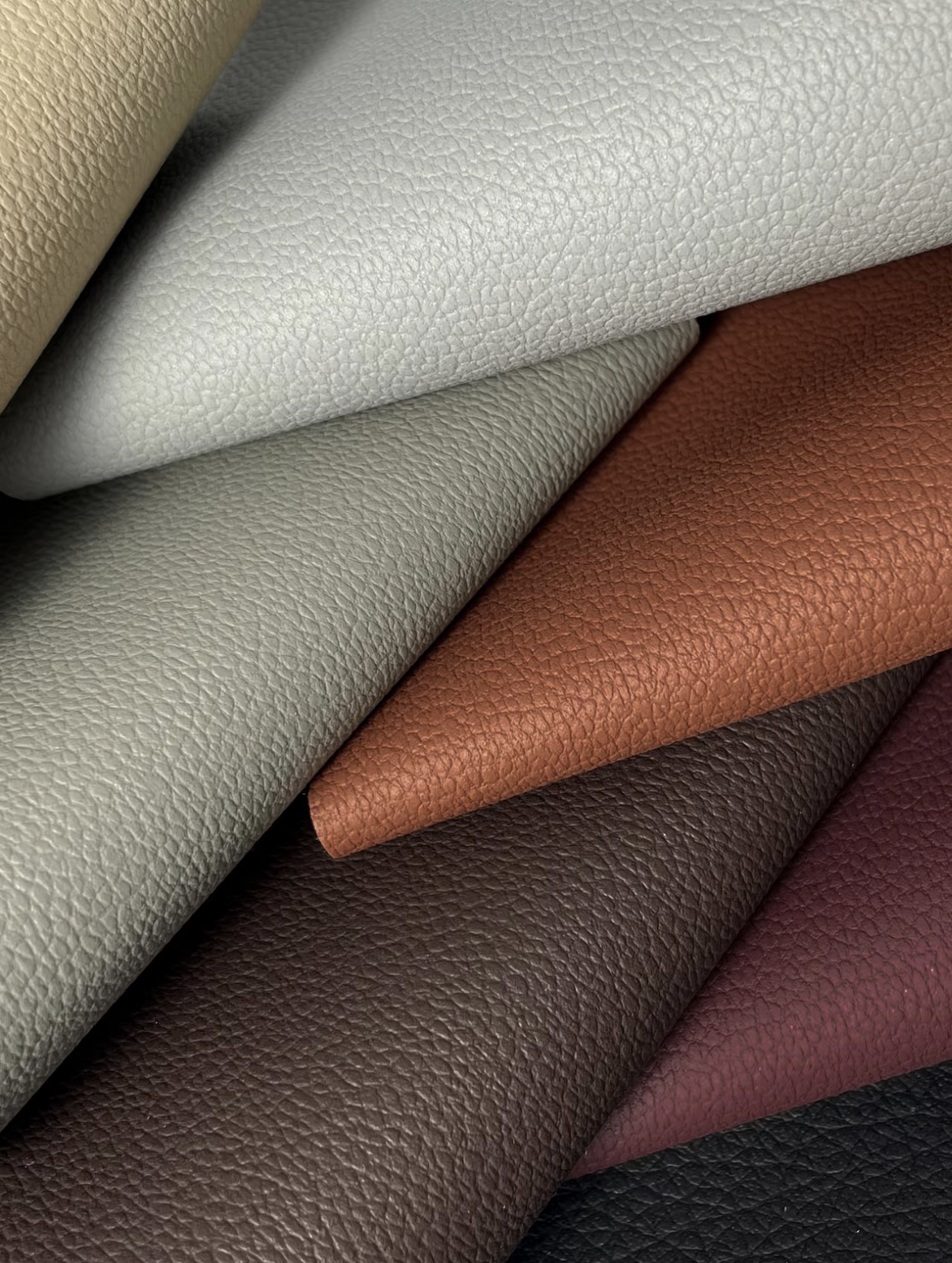
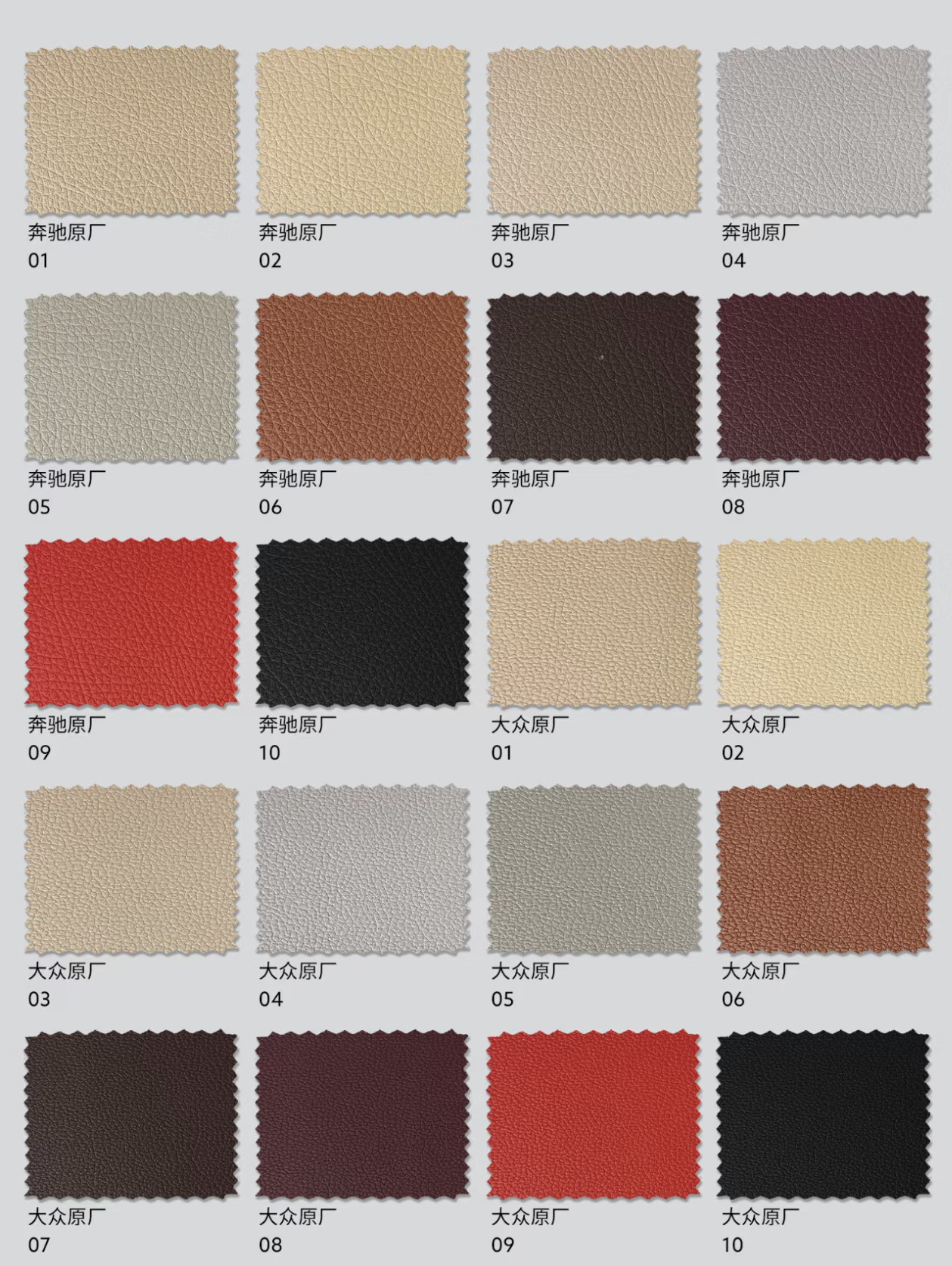

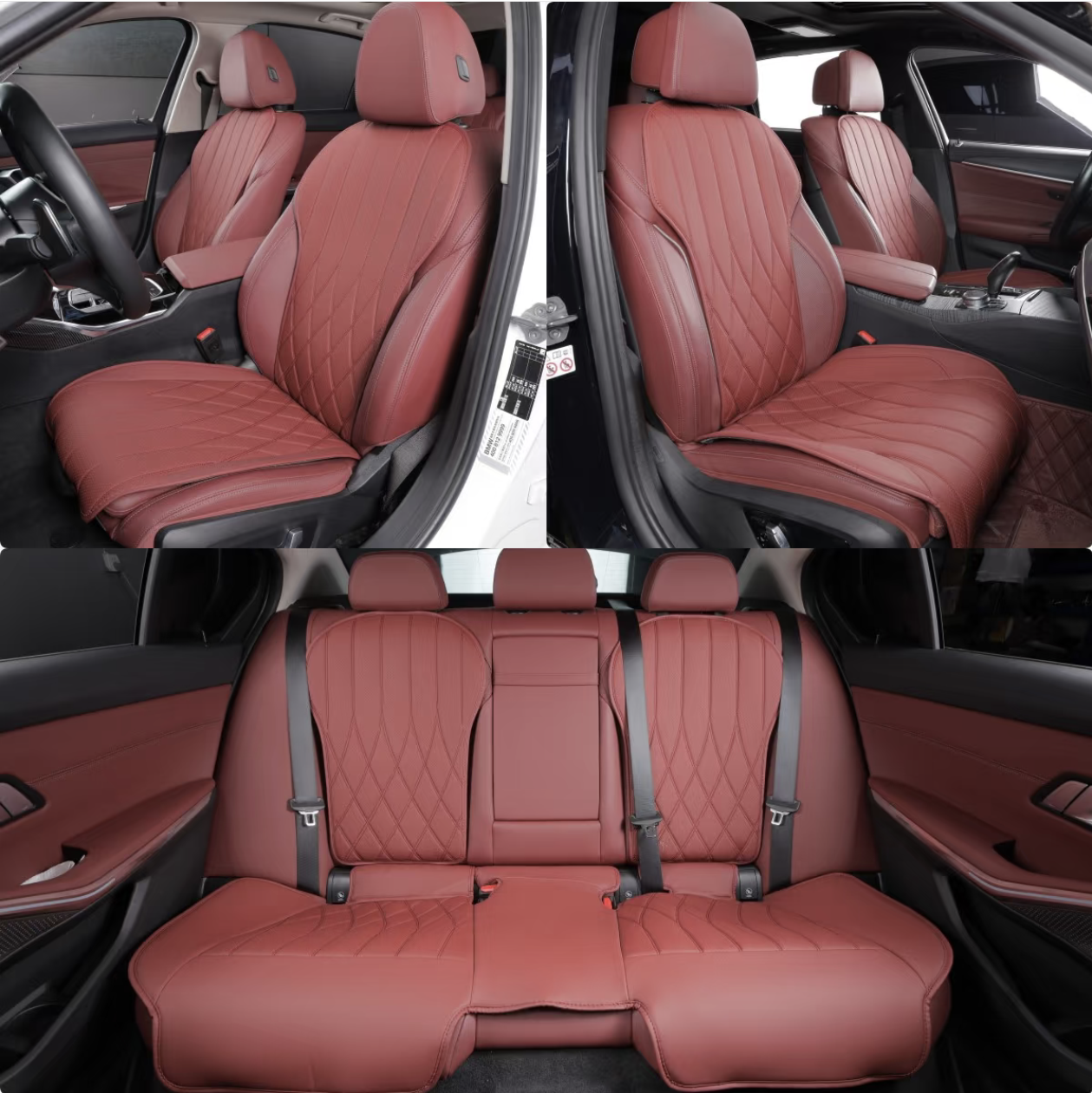
The faux suede has the similar feels as natural chammy. It has many features, such as soft grip feeling, flexibility, good drape property, then the physical and mechanical properties are better than chammy.
The fine and smooth feeling cause by using the microfiber(0.05D)
0.05D Concept :
Microfiber: 9000m=0.05g,1g length=180,000 m
Normal fiber:9000m=31.2g, 1g length=288m
Microfibers can't be spun and woven alone. It can be used by securing in a polymer-sea-island composite fiber
Each yarn contains 48 sea-island composite fiber, each sea-island fiber contains 37 island, and each island contains 48 microfibers, then each yarn contains 85,248 fibers.
Easy to punch where suede have a big advantage over other regular leather.
The physical loss is better than other regular leather after punching.
Quanshun Leather can provide different solutions for punching leather used for car seat.
Car seats are made of suede, which is soft and skin-friendly. You will fall in love with it as soon as you sit on it. The touch of your fingers is delicate and exquisite. The black and gray are calm and restrained, and the red is elegant and noble. The suede leather texture is stylish, which can easily create a luxurious atmosphere and instantly improve the taste and grade of the car. It is high-end but low-key.
If suede is used for sun visors, center consoles and other parts, it can not only effectively reduce reflections, but also add a sense of warmth and comfort to the entire driving space, making the driver's heart more stable and helping driving safety.
At the same time, suede is also very easy to take care of. Minor stains can be restored to clean by gently wiping with a damp cloth or a suede brush. Suede is also durable and can remain in good condition after long-term use.
Want to make your car interior unique and show elegance and quality? Then choose suede fabric without hesitation!
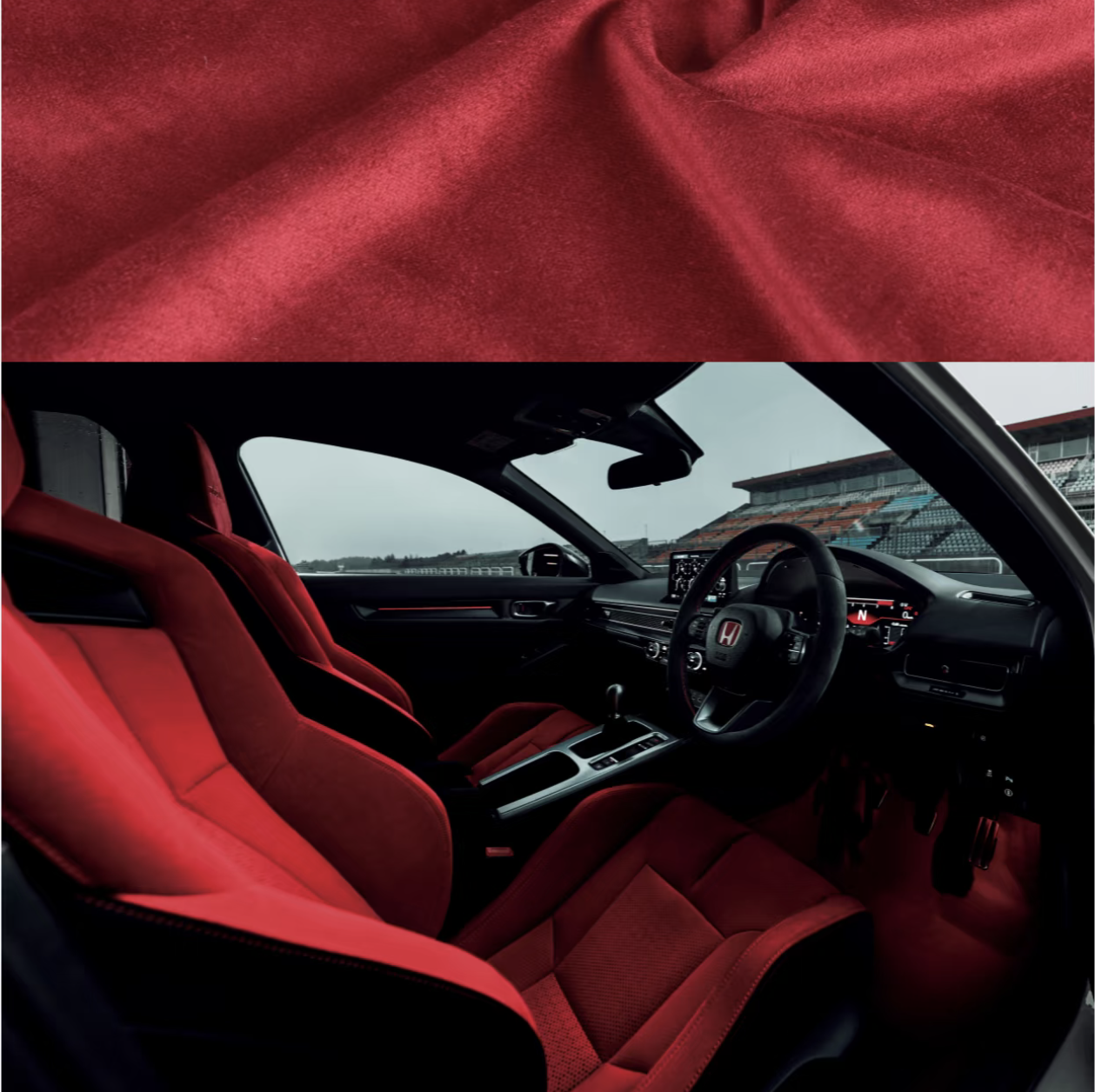
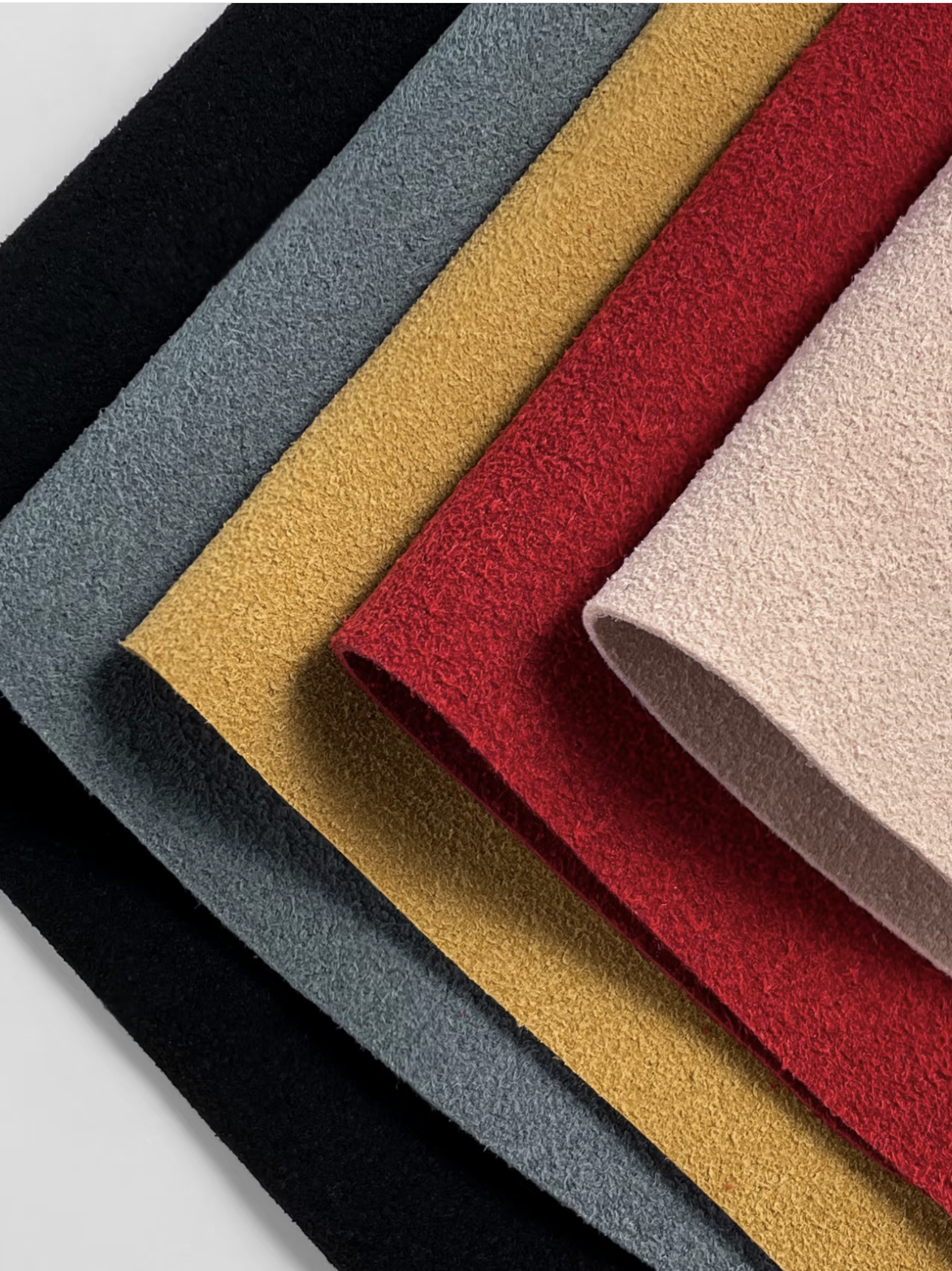
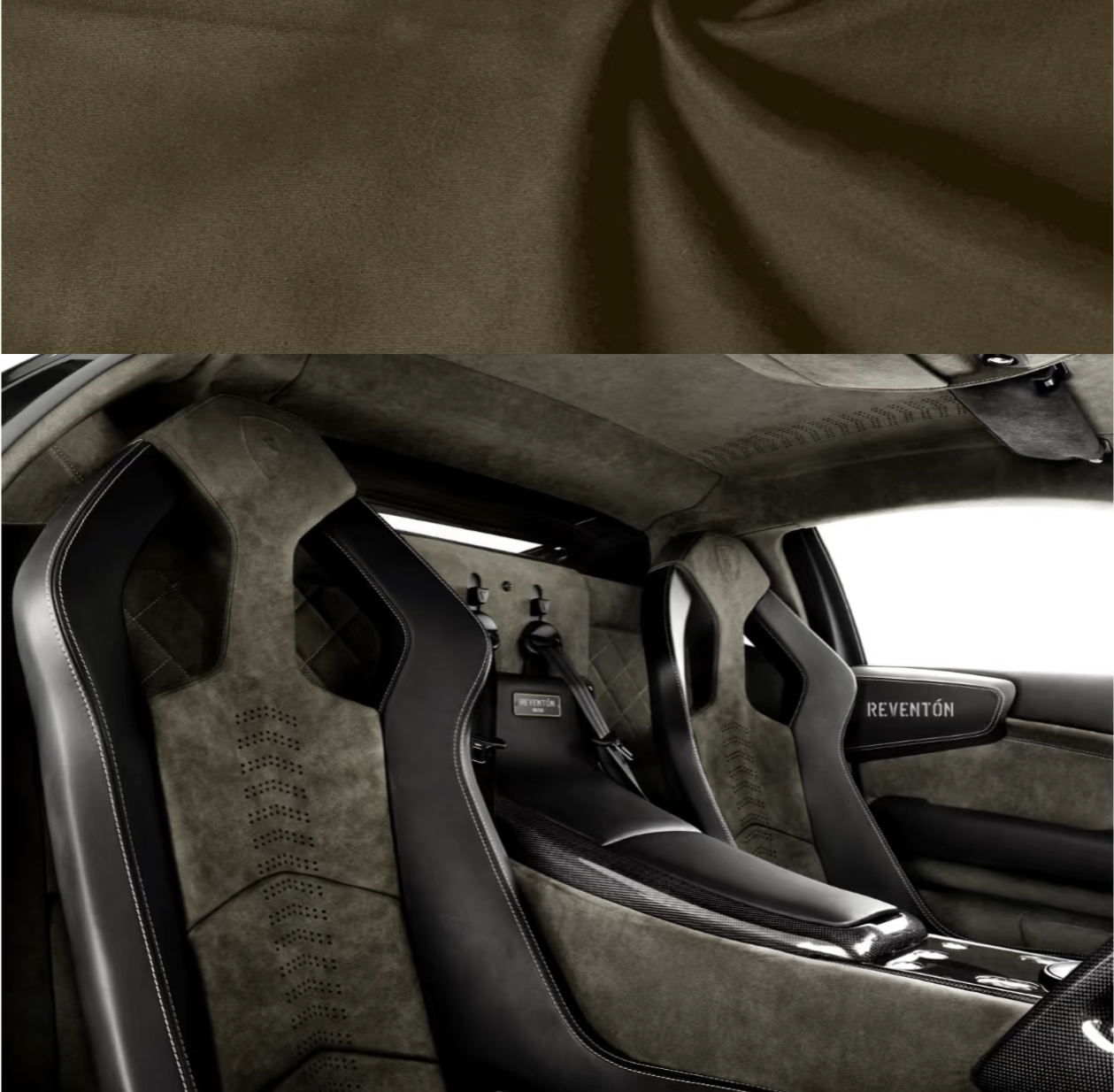
At Dongguan Quanshun Leather Co, .Ltd., a leading innovator in automotive fabric design, R&D, and manufacturing, we recently conducted a groundbreaking Odor Testing Training Program to elevate our quality standards. As a trusted supplier to global automotive giants like Mercedes-Benz and BMW, we recognize that every sensory detail—especially product odor—directly impacts user experience.
What We Achieved:
Theory & Practice Fusion: Employees mastered odor evaluation fundamentals, testing standards, equipment applications, and data analysis methods.
Hands-On Skill Development: Rigorous sessions included olfactory ability tests with standard嗅液 (sniffing agents), odor intensity assessments, and real-sample evaluations.
Patented Excellence: Building on our recent patent for “Low-Odor Interior Materials and Preparation Methods”, this training strengthens our ability to deliver eco-friendly, health-focused solutions aligned with rising consumer demand for cleaner in-car environments.
Why It Matters:
With growing emphasis on cabin air quality, automakers and consumers alike prioritize materials that combine durability and well-being. Quanshun Leather is proud to lead the charge in specialized base fabric innovation, ensuring our products set benchmarks for sustainability, safety, and sensory comfort.
Join Our Journey:
We remain dedicated to advancing automotive interiors that exceed expectations—because excellence isn’t just a standard; it’s our promise.
Let’s drive the future of mobility, one breath at a time.
Dongguan Quanshun Leather Co, .Ltd. – Pioneering materials for a greener, healthier automotive world.
Follow us for updates on cutting-edge R&D and industry insights!
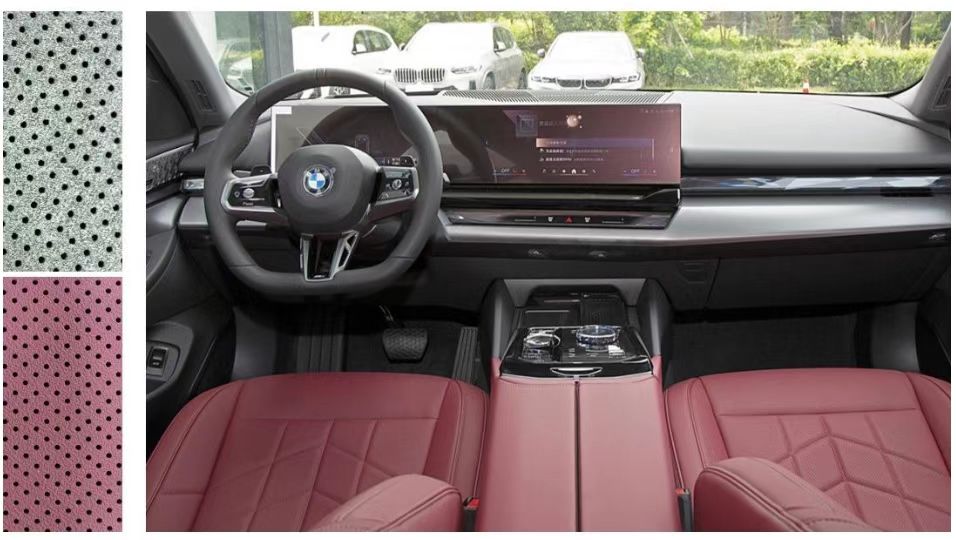
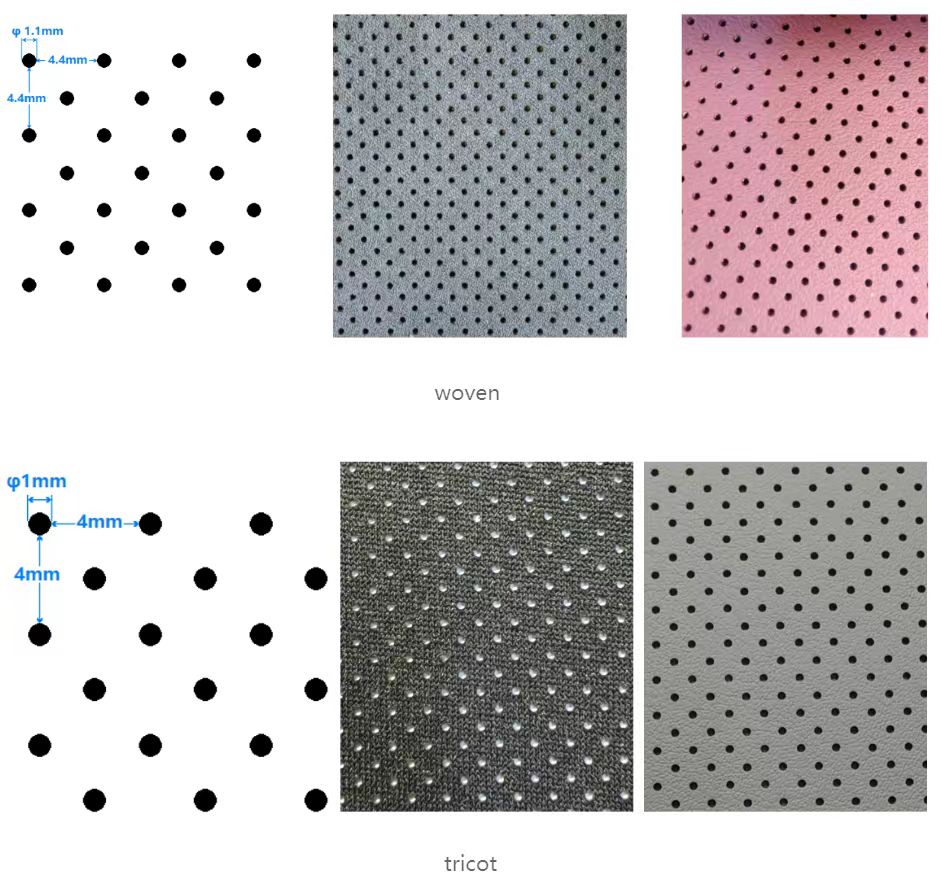
SR leather has excellent anti-hydrolysis properties. Its internal structure effectively solves the problem of PU materials decomposing in water during daily use. It shows super strong physical and chemical stability in humid, high temperature, acid and alkali environments, and perfectly solves the troublesome hydrolysis problem in the application of PU material products.
Due to its highly saturated structure, SR leather has an extremely wide temperature application range and extremely strong heat aging resistance. The material can maintain good physical properties in an environment of -40°C to 120°C, and the volume retention rate can reach more than 99.5% even under alternating hot and cold conditions.
SR leather has good oil resistance (excellent resistance to aliphatic hydrocarbon oils, fuel oils, lubricating oils and aromatic solvents); good chemical corrosion resistance (strong resistance to acids, alkalis and salts); and excellent oxidation resistance. These characteristics effectively prevent degradation, hardening, cracking and other problems during use.
SR leather has high resistance to permanent compression deformation, and has high wear resistance, high tensile strength and high resilience.
SR leather has good flame retardancy and excellent self-extinguishing properties. It will quickly carbonize and absorb latent heat when it comes into contact with fire, preventing the flame from spreading further, thus providing safety for its use.
SR leather can effectively inhibit the synthesis of bacterial and mold proteins, prevent their continued proliferation, and achieve antibacterial and anti-mildew effects. The test report shows that SR has a significant inhibitory effect on Escherichia coli, Staphylococcus aureus, Gram-negative bacteria and Candida albicans, and also has excellent inhibitory effects on Aspergillus flavus, Aspergillus terreus and Aspergillus niger.
SR leather can effectively resist ultraviolet radiation and can still maintain good physical and chemical properties under long-term sunlight exposure, so it has excellent anti-ultraviolet performance.
SR leather does not contain restricted substances such as pentaene trialdehyde, phthalates, eight heavy metals, polycyclic aromatic hydrocarbons (PAHS), polybrominated diphenyl ethers (PBDES) and polybrominated diphenyl ethers (PBBS), and meets environmental protection requirements such as EU ROHS 2.0 and US CA65.
SR leather is a leather with excellent comprehensive performance. It can adapt to various usage scenarios, especially for products with special functional requirements. SR leather has excellent advantages in quality and weather resistance. It should be one of the safest and most popular leathers. It is your best choice without worrying about any quality issues.
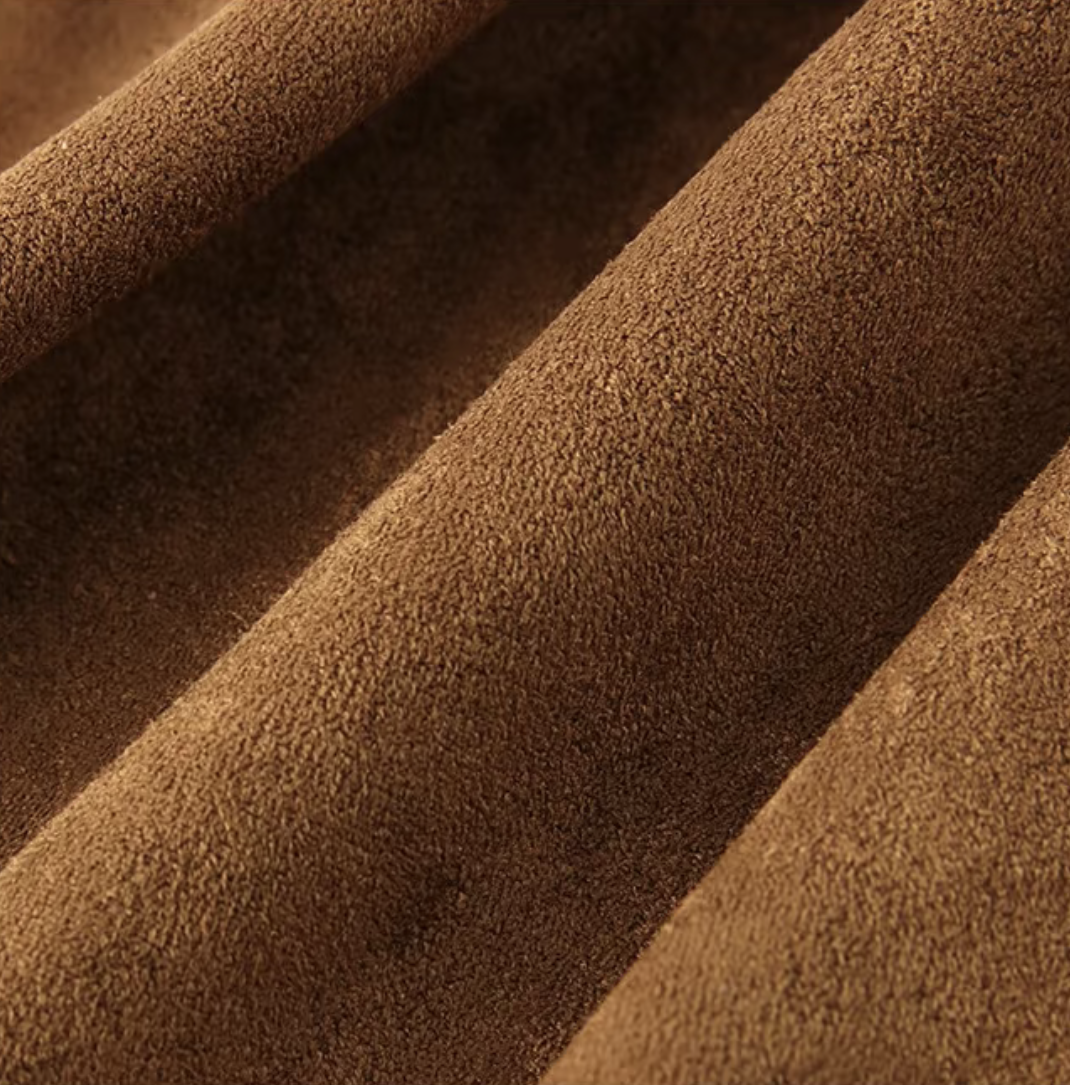


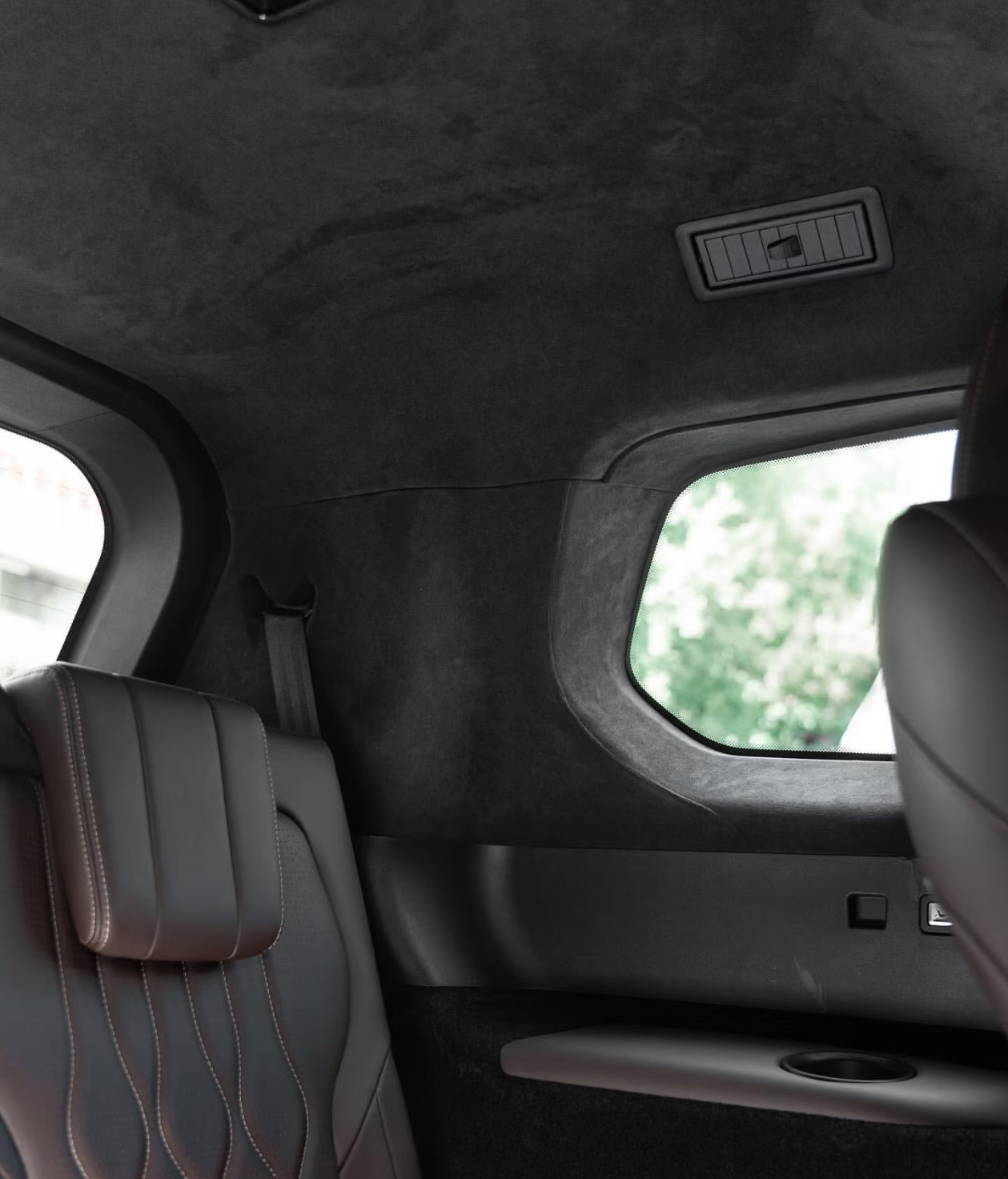
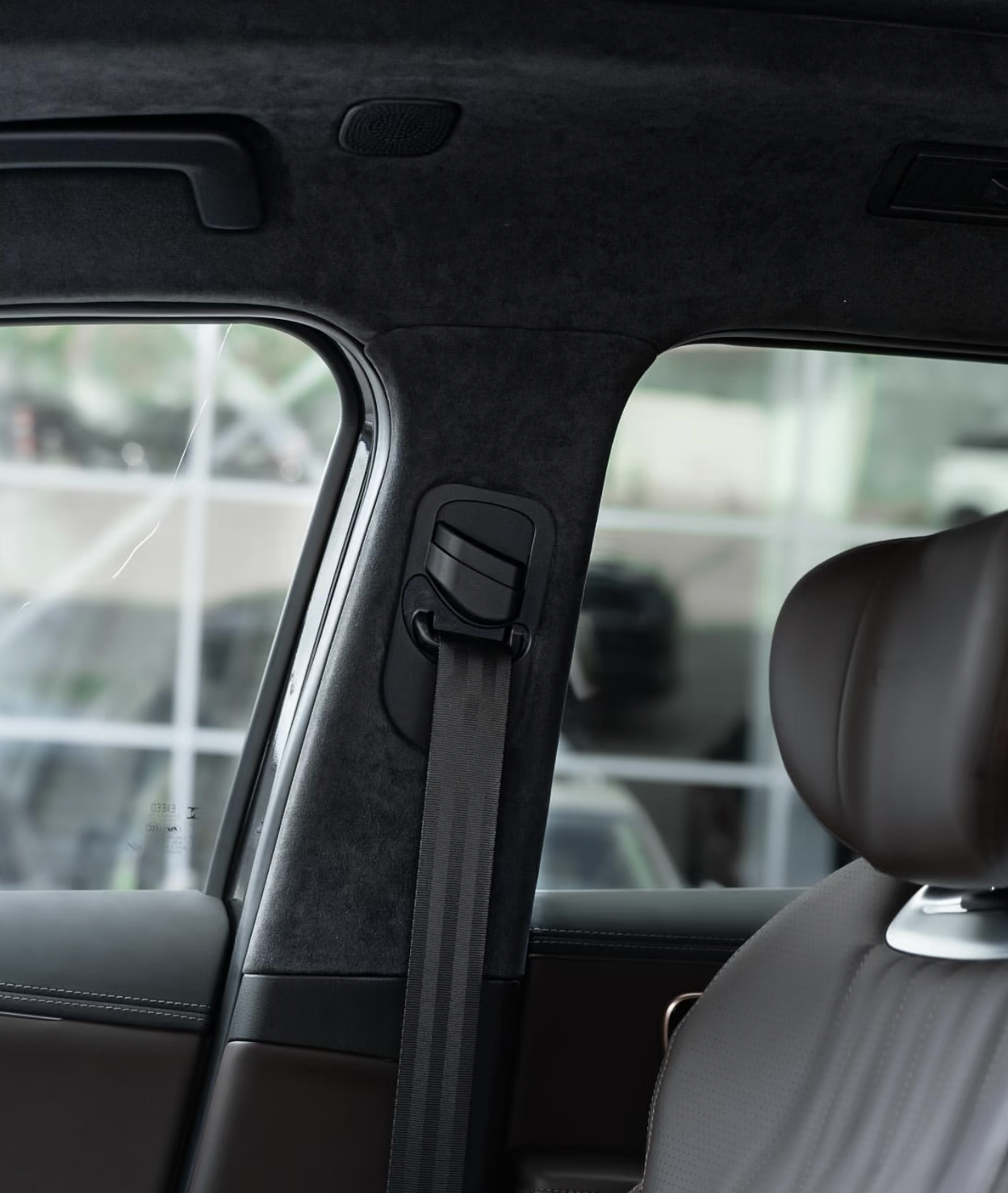
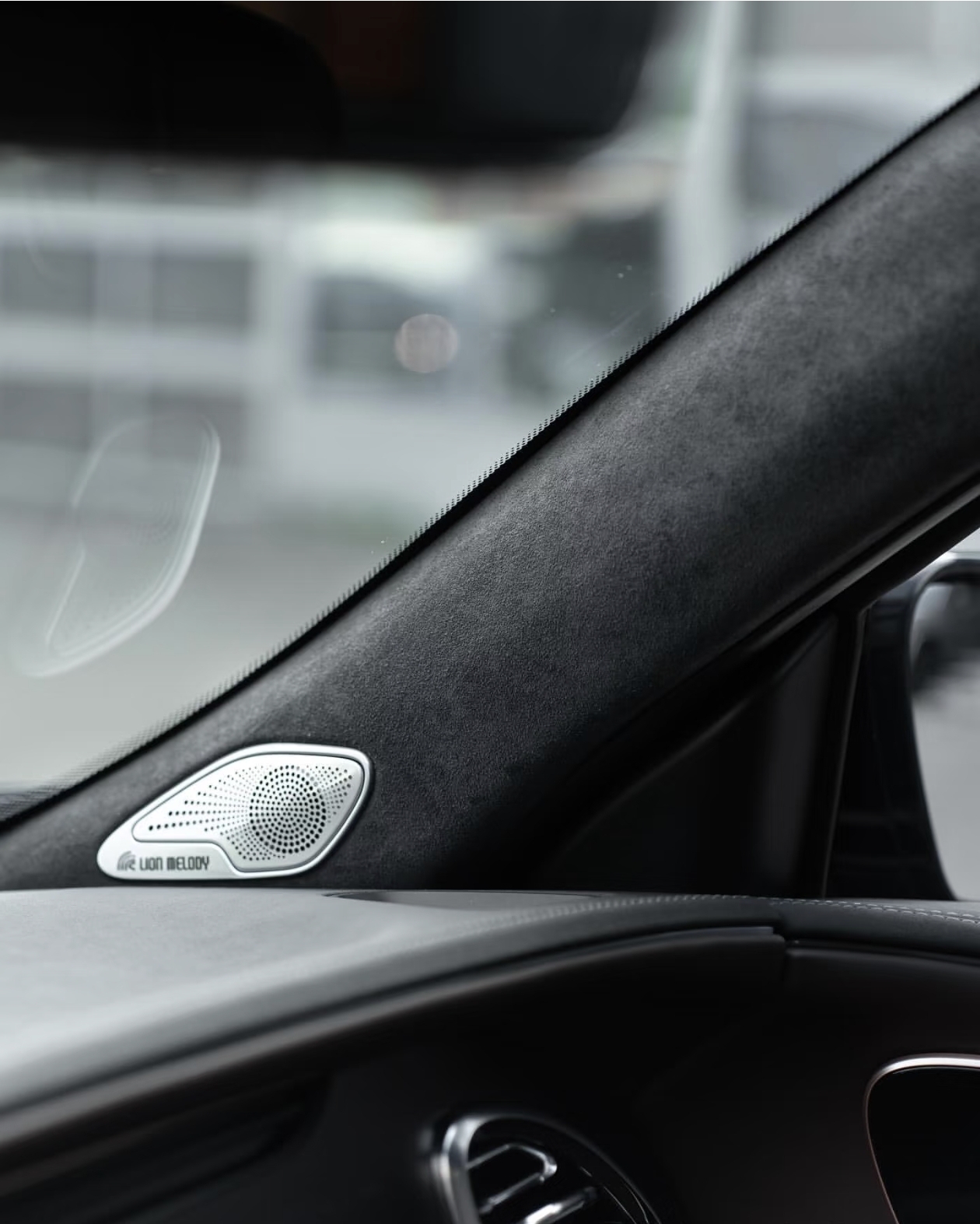
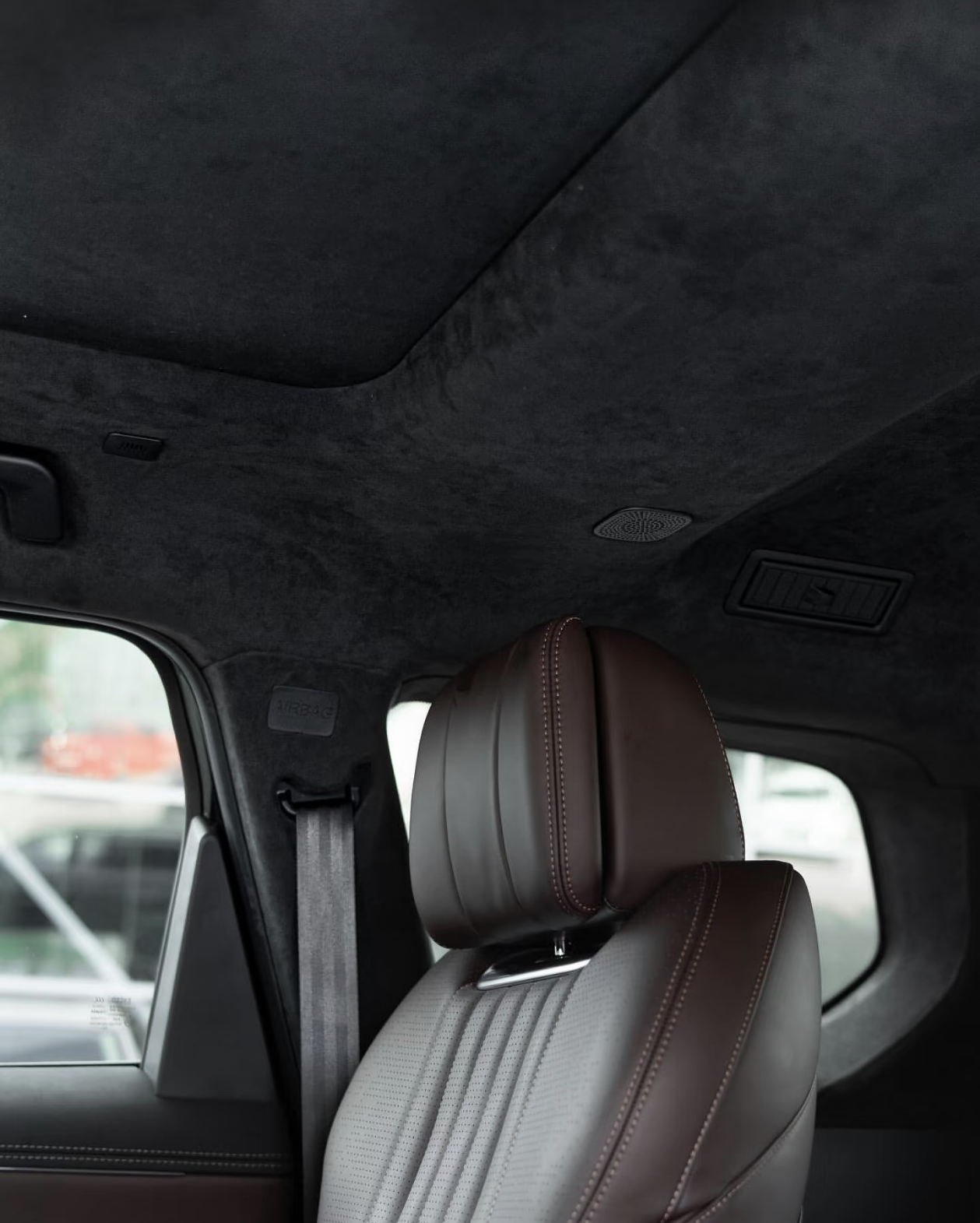
Fabric seats VS leather seats
Disadvantages of fabric seats:
Easy to get dirty and difficult to clean: Fabric seats easily absorb colored or odorous liquids, such as beverages, etc., which are difficult to clean and require special cleaning fluid
Poor heat dissipation: Due to the strong heat absorption of fabric seats, they will feel stuffy when used in summer, and the heat dissipation effect is not good
Not high-end: Compared with leather seats, fabric seats are not high-end in appearance
High maintenance requirements: Regular cleaning and maintenance are required, otherwise it is easy to breed bacteria, mites, etc.
Leather seats have the following advantages:
Improved grade: It can create a high-end and luxurious atmosphere in the car and improve the overall quality of the vehicle.
Easy to clean: Dust and stains are not easy to penetrate deep into the seat. The dust on the surface can be cleaned by wiping it lightly with a cloth, and the use of special cleaning agents can quickly remove stains to keep the seat clean.
Good heat dissipation: Compared with fabric seats, leather seats have better heat dissipation performance. After being burned by the sun in summer, you won’t feel particularly hot if you pat it a few times with your hands or sit on it for a while.
Comfortable texture:
The leather material is soft and delicate, providing passengers with a more luxurious riding experience.
Good breathability and warmth retention: The temperature of the seat surface can be adjusted according to the season and temperature changes. For example, in winter, when the heater is turned on, the leather will be hot, making people feel comfortable; while in summer, when the air conditioner is turned on, the leather seat will be relatively cool.
Relatively dirt-resistant: Compared with ordinary fabrics, cotton and other materials, leather is not easy to get dirty, and it will only get a little dusty after a long period of non-use.
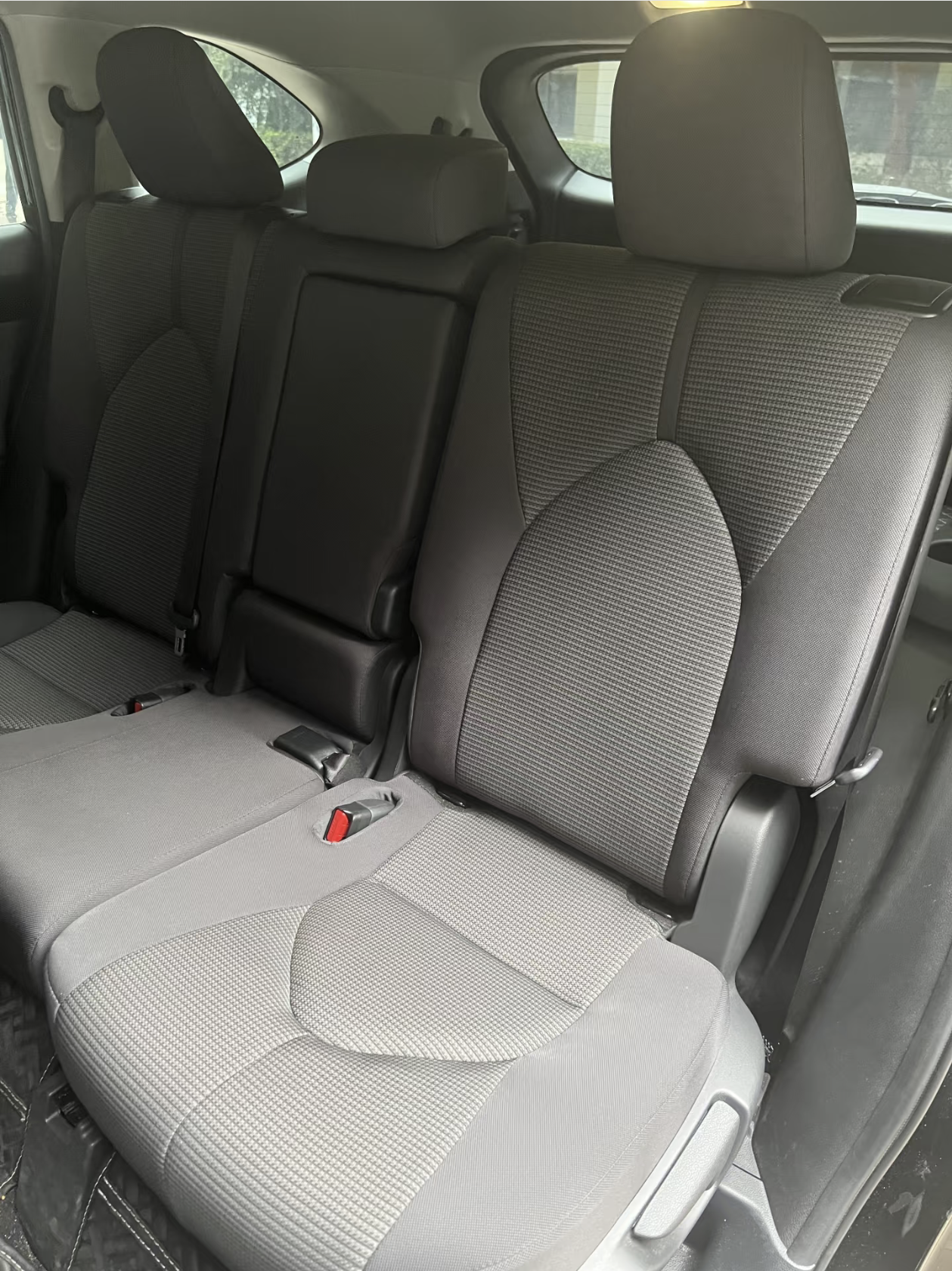
Fabric seats
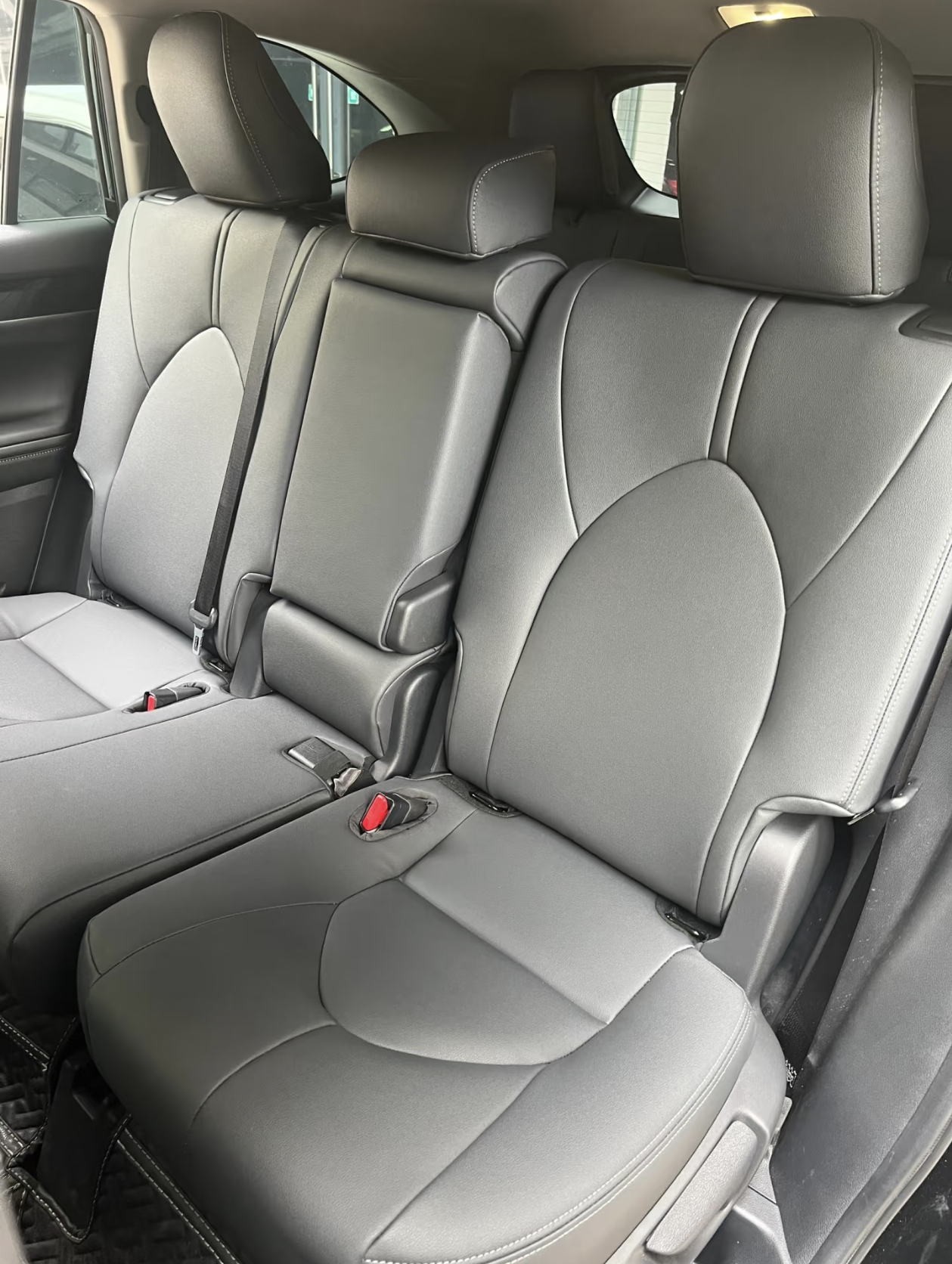
Imitation leather seats
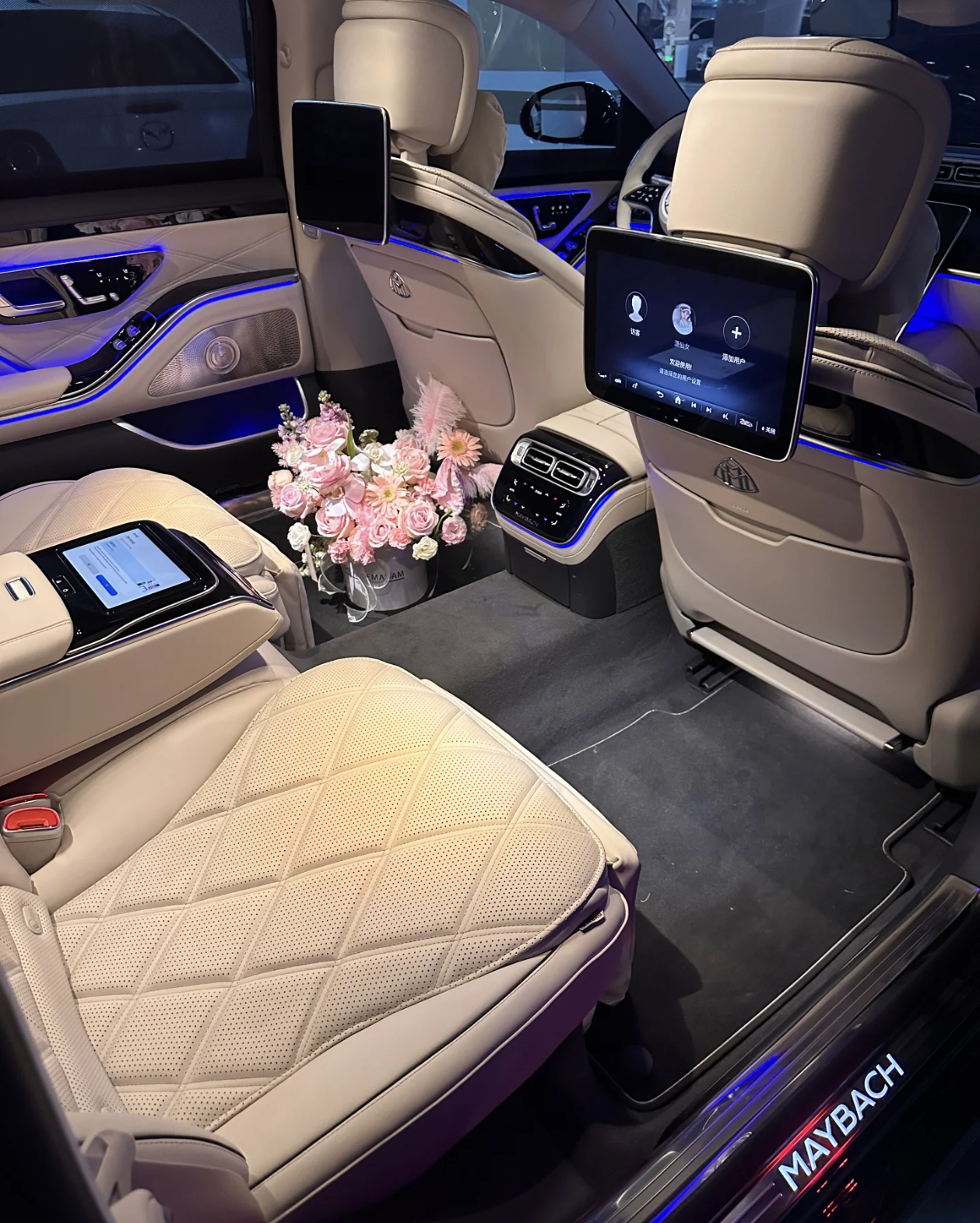
Genuine leather seats
Silicone leather has been widely used in the field of automotive interiors in recent years due to its unique performance and environmental protection characteristics. The following are the specific applications and advantages of silicone leather in automotive interiors:
Specific applications
Car seats: Silicone leather is often used in the fabric of car seats. Its soft and skin-friendly characteristics provide passengers with excellent riding comfort. In addition, its wear resistance, scratch resistance, waterproof, mildew resistance and antibacterial properties enable the seats to maintain good appearance and function after long-term use.
Steering wheel: The steering wheel wrapped in silicone leather has a comfortable touch and good anti-slip performance, which helps to improve driving safety and comfort.
Dashboard and center console: Silicone leather can be used for the decoration of dashboards and center consoles. Its high-end texture and diverse color and texture selection can enhance the overall luxury and technological sense of the car.
Door panels and armrests: Silicone leather can also be used for the decoration of door panels and armrests. Its easy-to-clean and stain-resistant characteristics make the car environment more tidy and sanitary.
First of all, environmental protection is a major advantage of silicone leather. Its main raw material is silicone, which comes from natural quartz. No harmful substances such as formaldehyde, heavy metals, and azo dyes are added during the production process. It is made of the same material as baby pacifiers, is non-toxic and odorless, and has no harm to human health. In addition, the production process of silicone leather adopts solvent-free or low-solvent technology, with low VOC emissions, which meets the requirements of green production1. In terms of use and waste disposal, silicone leather has good chemical stability, is not easy to deteriorate, damage or discolor, and the base fabric and silicone layer can be recycled to reduce environmental pollution.
Secondly, in terms of comfort, silicone leather is soft and skin-friendly, providing an excellent riding experience. Its breathability and wear resistance ensure comfort and durability after long-term use. For example, the steering wheel wrapped in silicone leather is comfortable to the touch and has good anti-slip performance, which helps to improve driving safety and comfort.
Finally, durability and easy cleaning are also its significant advantages. Silicone leather has excellent wear resistance, scratch resistance, waterproof, mildew resistance and antibacterial properties, so that the seat can still maintain good appearance and function after long-term use. In addition, its ability to resist a variety of stains makes cleaning quick and easy; just wipe with a damp cloth to remove stains
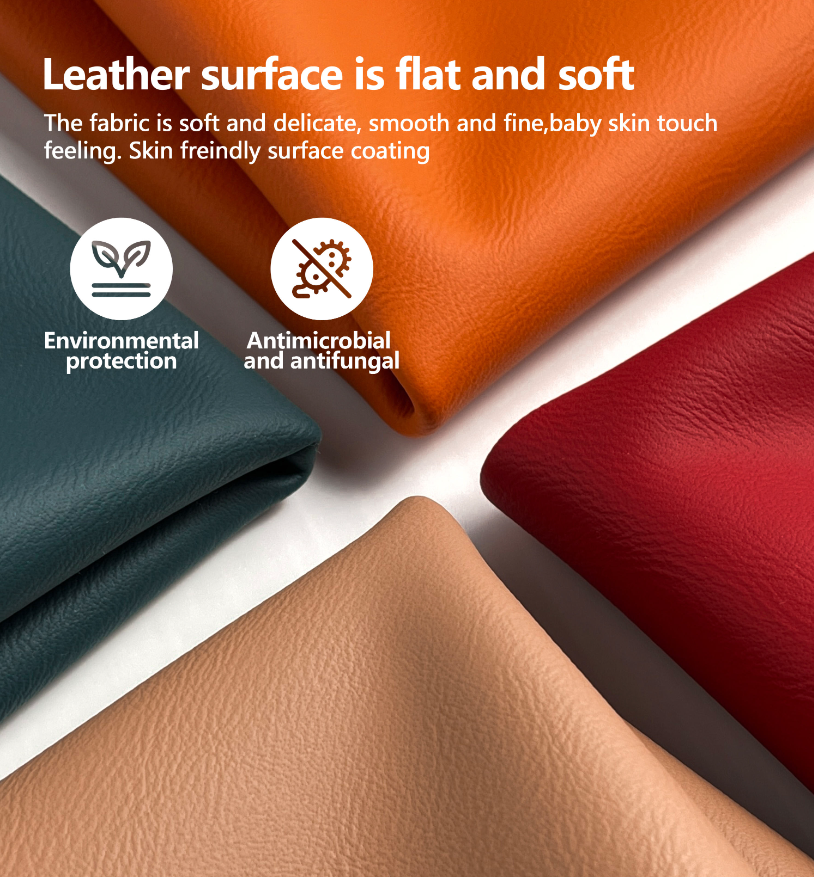
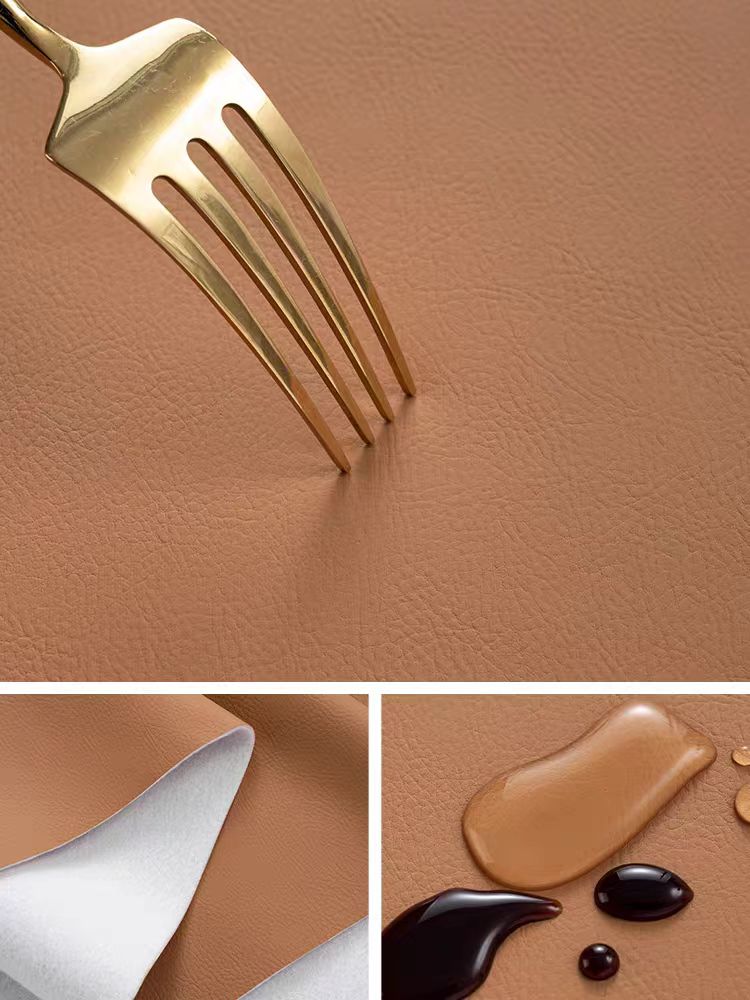
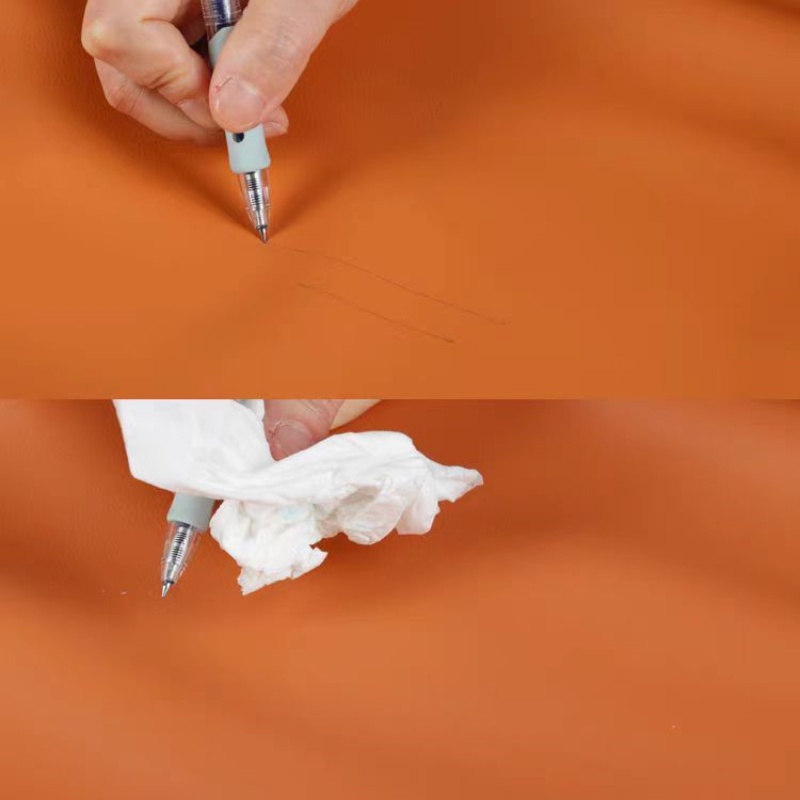
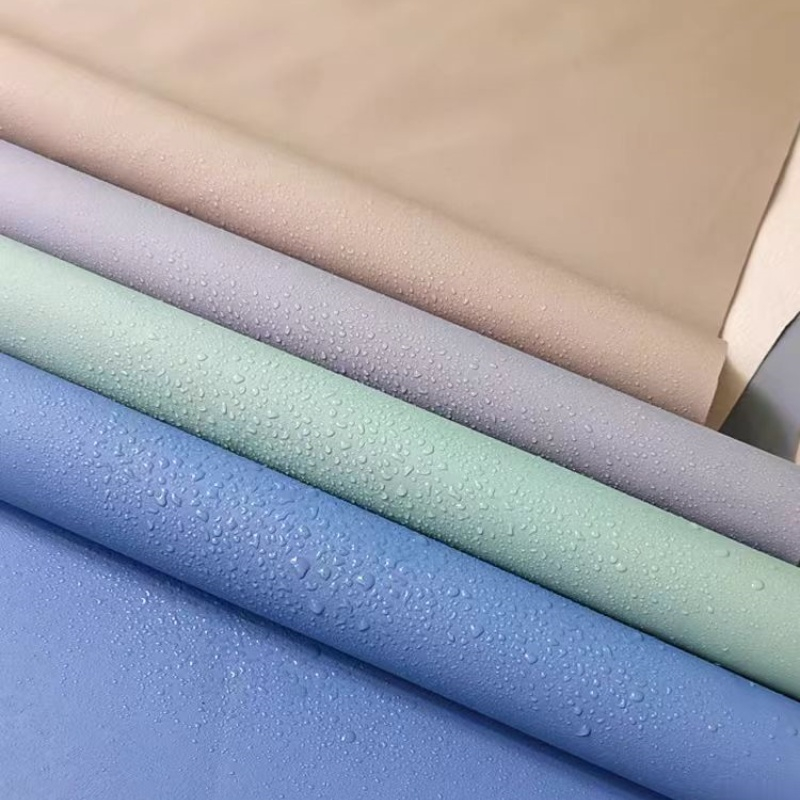

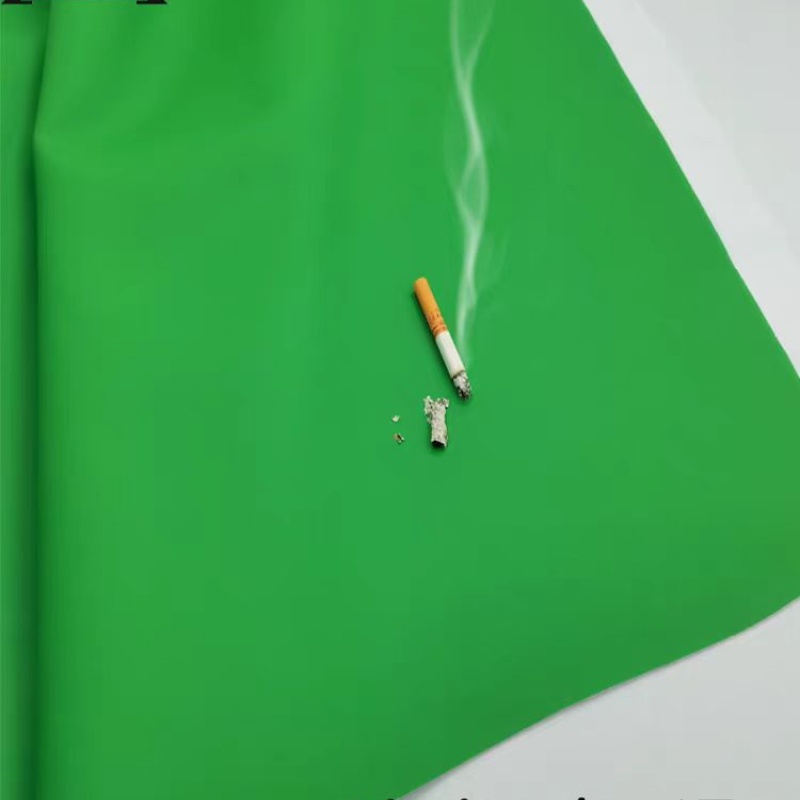
There are many choices of fabrics for car interiors, mainly including fabrics, suede and leather. Each fabric has its own unique advantages and applicable scenarios.
Fabric fabrics: comfortable and affordable choice
Fabric fabrics are common choices for car interiors, and there are many types, such as pure cotton, pure wool, chemical fiber, blended, polyester, cotton nylon, acrylic, polypropylene, etc.
Advantages:
High comfort: The fabric is soft and feels super comfortable, and it feels like home when you sit in it.
Affordable price: The cost is low and suitable for economy cars.
Various styles: Rich textures and patterns can meet different aesthetic needs.
Suede fabric: luxury and comfort coexist
Suede fabric looks like natural suede and feels very delicate, giving people an ultimate sense of comfort.
Advantages:
Soft fabric: The delicate touch makes people love it.
Moisture-absorbent and breathable: You won’t feel stuffy even if you drive for a long time.
High-end appearance: The unique fluffy texture and soft luster make it look very luxurious.
Leather fabric: the competition between genuine leather and imitation leather
Leather fabrics include genuine leather and imitation leather. Genuine leather is mostly made of cowhide and sheepskin, while common artificial leather is made of polyvinyl chloride (PVC) or polyurethane (PU).
Genuine leather:
Tough and durable: high-grade touch and good breathability.
Changes over time: a unique luster and texture will form after long-term use, which is more charming.
Imitation leather:
Price advantage: much cheaper than natural leather.
Appearance is close: the appearance can be made very close to natural leather, and maintenance is relatively simple.
Summary
Each fabric has its own unique charm and applicable scenarios. The most important thing is to choose the one that suits you!
1. Leather material
- Features: Leather is a high-end car interior material, usually used for seats, steering wheels and interior panels. It has a good feel and luxurious feel, and the visual effect is also very elegant.
- Advantages: Comfortable, durable, easy to clean, with high wear resistance, and the texture of leather will become softer and more natural over time.
- Disadvantages: The price is high, and regular maintenance and cleaning are required, otherwise it is easy to crack or fade.
- Suitable for people: Car owners with a high budget who pay attention to luxury and comfort.
2. Synthetic leather
- Features: Synthetic leather is a man-made material that looks and feels close to leather, but the price is more affordable.
- Advantages: Durable, easy to clean, low maintenance cost, not easy to fade or crack.
- Disadvantages: Long-term use may lose some texture, especially in high temperature or high humidity environment, aging may occur.
- Suitable for people: Car owners with limited budget but still pursuing higher quality.
3. Fabric materials
- Features: Fabric interior materials (such as flannel, nylon, polyester, etc.) are widely used in seats, doors, and roof linings. Fabric materials usually have high breathability.
- Advantages: Comfortable, breathable, especially suitable for use in hot climates; low cost, rich variety, easy to match.
- Disadvantages: Easy to absorb stains and odors, relatively troublesome to clean. May wear or fade after long-term use.
- Suitable for people: Car owners with limited budgets who live in hot or humid climates, or car owners who don’t mind regular cleaning.
4. Plastic and imitation wood materials
- Features: Plastic and imitation wood materials are mainly used in instrument panels, door interior panels, etc. Plastics are often used in low-cost models, while imitation wood materials add a touch of luxury to the car interior.
- Advantages: Durable, low cost, easy to clean, and imitation wood materials can provide a more natural visual effect.
- Disadvantages: Plastic surfaces are easily scratched. Although imitation wood materials are beautiful, they may lose paint or age after long-term use.
- Suitable for: Consumers who pay attention to cost-effectiveness and prefer economy cars.
5. Carbon fiber materials
- Features: Carbon fiber materials have a modern and sporty feel and are often used in the interiors of high-performance and sports cars. It is light and durable and is usually used for dashboards, doors and seat parts.
- Advantages: Lightweight, high strength, wear-resistant, and has a unique sense of modern technology.
- Disadvantages: High price, complex manufacturing process, and more susceptible to scratches and wear than other materials.
- Suitable for: Car owners who pursue sporty style and high-performance car interiors, or consumers of high-end cars.
6. Aluminum alloy and metal materials
- Features: Aluminum alloy and other metal materials are often used for decorative parts of vehicle interiors, such as door handles, air-conditioning vents, dashboards, etc.
- Advantages: Modern, corrosion-resistant, durable, giving car owners a high-end and refined feeling.
- Disadvantages: Metal materials will make the temperature change in the car more obvious, cold in winter and hot in summer, and the cost is high.
- Suitable for: Consumers who prefer high-end, modern style car interiors, or car owners who have a special preference for metal texture.
7. Natural wood
- Features: Natural wood is usually used in the interior of luxury cars
, such as dashboards, door trims, etc. Natural wood has natural texture and warm visual effects.
- Advantages: Unique natural beauty and luxury, warm and elegant visual effects, comfortable touch.
- Disadvantages: Expensive, easily affected by environmental factors such as moisture and sunlight and aging.
- Suitable for: Car owners who pursue luxury and high-end car interiors, especially those who pay attention to natural texture and craftsmanship.
8. High-tech materials (such as nano coatings)
- Features: With the development of technology, more and more high-tech materials are entering the field of car interiors, such as nano coatings, antibacterial materials, etc. These materials are usually applied to seat fabrics or interior surfaces.
- Advantages: It has anti-fouling, antibacterial, anti-ultraviolet and other functions, which makes it more hygienic and easy to clean.
- Disadvantages: It has high technical content and is usually expensive.
- Suitable for: Car owners who pursue a sense of technology and innovative materials, especially consumers who have high requirements for hygiene and cleanliness in the car.
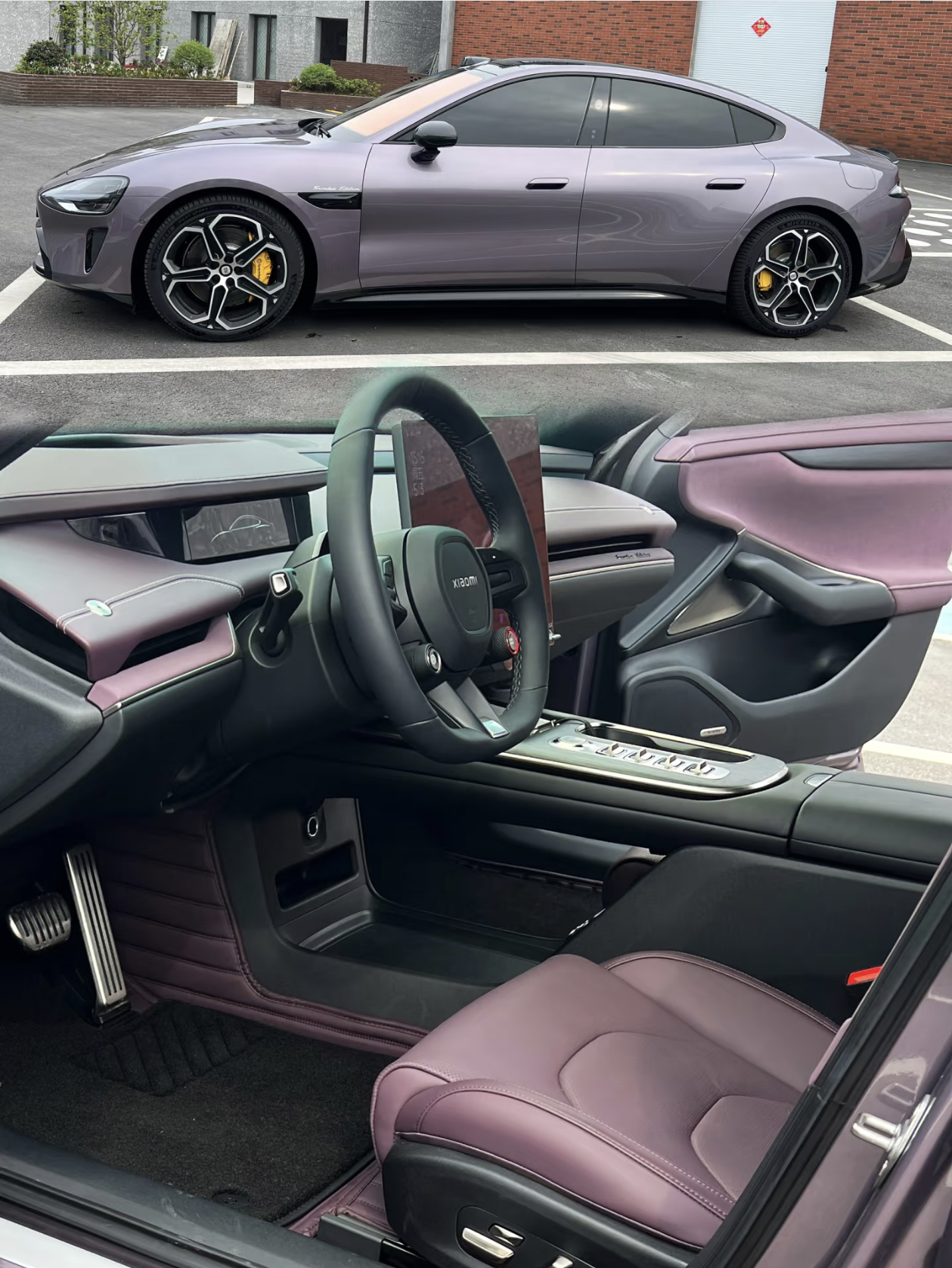

How to choose suitable car interior materials?
When choosing car interior materials, in addition to considering budget, appearance and durability, you also need to make decisions based on the following factors:
1. Budget: High-end materials such as leather, natural wood and carbon fiber are usually more expensive, while synthetic leather, fabric and plastic are more economical. You need to make a reasonable choice based on your budget.
2. Use environment: If you live in a humid or rainy environment, it may be more appropriate to choose water-resistant and moisture-resistant materials (such as synthetic leather and plastic). If you often drive in hot places, fabrics with good breathability may be more comfortable.
3. Car positioning and style: If your car is a luxury or high-end model, materials such as leather, natural wood or carbon fiber will be more in line with the positioning and style of the vehicle. If it is an economy car, it is more appropriate to choose practical and cost-effective materials.
4. Comfort and durability: Although genuine leather is luxurious, it requires maintenance; although fabric materials are comfortable and breathable, they easily absorb stains. Synthetic leather strikes a balance between the two.
In short, the choice of car interior materials should be comprehensively considered according to personal needs and usage, and find the material that best suits you.
The secret of car interior leather! Which one is the most worth choosing?
How much do you know about car interior leather?
Car artificial leather: environmentally friendly and economical
Car artificial leather, also called synthetic leather or artificial leather, is a material that imitates the appearance and touch of genuine leather. It is not only low-cost, but also particularly environmentally friendly. It is usually used for interior parts such as car seats, door panels and dashboard covers. Common synthetic leather materials are polyvinyl chloride (PVC), polyurethane (PU), thermoplastic elastomer (TPO) and suede. These materials are not only durable, easy to maintain, but also wear-resistant, and are a good choice to enhance the beauty and functionality of car interiors.
Analysis of main product types
PVC synthetic leather: PVC synthetic leather is a common car interior material with low cost, easy to clean and maintain, and good waterproof performance. However, its texture and lifespan may not be as good as other synthetic leathers or natural leathers.
PU synthetic leather: PU synthetic leather is more environmentally friendly than PVC, its texture is closer to natural leather, and its wear resistance and durability are higher. It also has certain waterproof properties and is easier to maintain and clean than natural leather.
TPO synthetic leather: TPO leather is commonly used for car dashboards and interior panels. It has high wear resistance and durability, good UV resistance, and can maintain color stability in outdoor environments. TPO leather is relatively light and easy to process, so it is very popular in car interior design.
Suede: This is a synthetic material designed to imitate the look and feel of suede. It is not real animal leather, but is made of synthetic fibers that are easy to clean and maintain. It provides a soft surface texture and appearance, making the car interior look more upscale.
When choosing car interior leather, you may wish to consider these factors: durability, environmental protection, maintenance convenience, and aesthetics. I hope this information can help you find the best car interior leather for you!
Typically, the fabric choices for car interiors include cloth, microsuede (also known as faux suede), vinyl, genuine leather, and faux leather. Genuine leather and faux leather are most widely used in new or luxury cars. For those who are new to vehicle decoration, genuine leather and faux leather may look similar, but there are significant differences between them.
The advantages of faux leather mainly include affordable price, similar appearance to genuine leather, waterproof and easy to clean, and a variety of color options.
Due to its moderate price, faux leather is popular among consumers. At the same time, its appearance is indistinguishable from genuine leather, but the price is more affordable.
In addition, the surface of faux leather is pore-free, waterproof and easy to clean, and stains and liquid spills can be easily removed with a damp cloth. This feature is especially popular with families with children because its convenient cleaning method saves a lot of time and energy. In addition, faux leather also provides a variety of color options, and its color is stable and will not fade due to long-term use. Finally, choosing faux leather also reflects animal friendliness.
However, faux leather also has some disadvantages. First, due to the lack of sufficient pores, artificial leather cannot breathe in the hot summer, and may feel sticky to the skin when sitting or leaning for a long time, which is not very comfortable. Second, artificial leather conducts heat quickly, which may give people a burning sensation when used in the summer. Third, the durability of artificial leather is relatively poor, and the service life is usually no more than ten years. Over time, cracks and tears may appear, seriously affecting the appearance.
Detailed explanation of the advantages and disadvantages of genuine leather
There are many advantages of genuine leather. First of all, it is often used as a must-have for luxury interiors of vehicles. Its soft and comfortable characteristics are deeply loved by car buyers, bringing the ultimate riding experience to drivers. In addition, the interior of a car decorated with genuine leather exudes a unique smell, as if people are in a new car, and this freshness also attracts many consumers.
In terms of durability, genuine leather is the best. It is not only tear-resistant and wear-resistant, but also becomes softer with the increase of use time, which is completely different from the hardness when it first enters, providing passengers with a more comfortable riding environment.
Furthermore, as a porous material, genuine leather has excellent breathability. Especially in hot areas, genuine leather can breathe and has good heat dissipation, ensuring that it remains cool in high temperature environments and avoids feeling stuffy and uncomfortable when riding. At the same time, the smooth feeling when touching genuine leather is also irresistible.
For people with allergies, leather interiors are an ideal choice. There is no allergen residue in its manufacturing process, providing passengers with a safe and comfortable riding environment. In addition, vehicles with genuine leather tend to have higher resale values, bringing more financial returns to car owners.
However, there are also some disadvantages to leather interiors. One is the high price. In order to pursue a luxurious appearance, consumers often need to pay more financially. Secondly, although genuine leather is durable, it still requires regular maintenance and cleaning to keep it in good condition. Long-term exposure to sunlight may also cause the leather to fade, affecting its appearance. In addition, compared with artificial leather, the color options of genuine leather are relatively few, mainly black, brown and white, and the options for other colors are relatively limited.
In addition, compared with artificial leather, genuine leather faces some challenges when cleaning. Due to the high absorbency of genuine leather, once liquid or dirt is splashed, they will be quickly absorbed by the genuine leather, which may require more time and effort to clean thoroughly. Therefore, for families with children, choosing a car with genuine leather interior may not always be the best choice, unless the child already has a high level of self-discipline or has grown to a stage where he will not spill liquid or food on the leather surface of the vehicle at will.
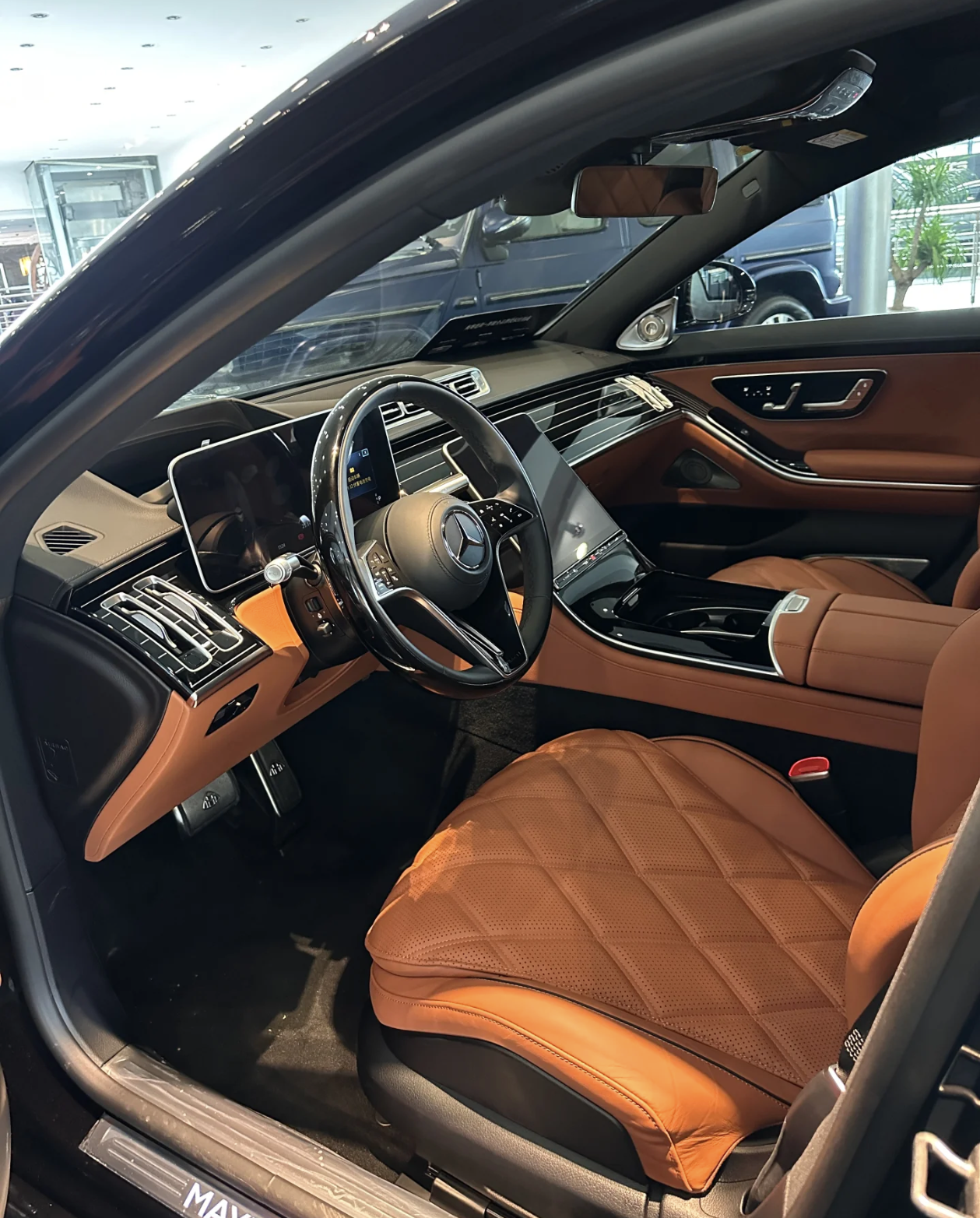
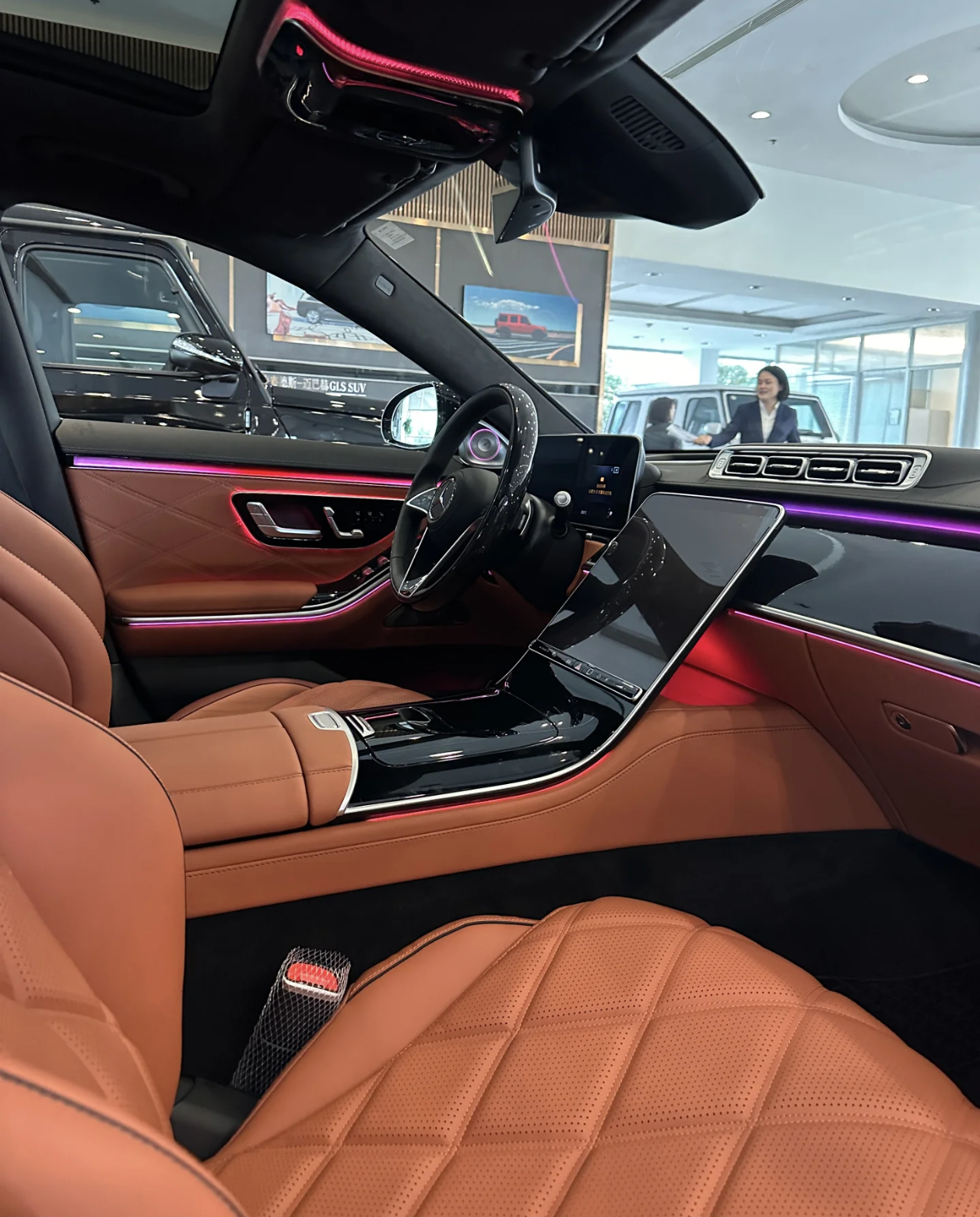
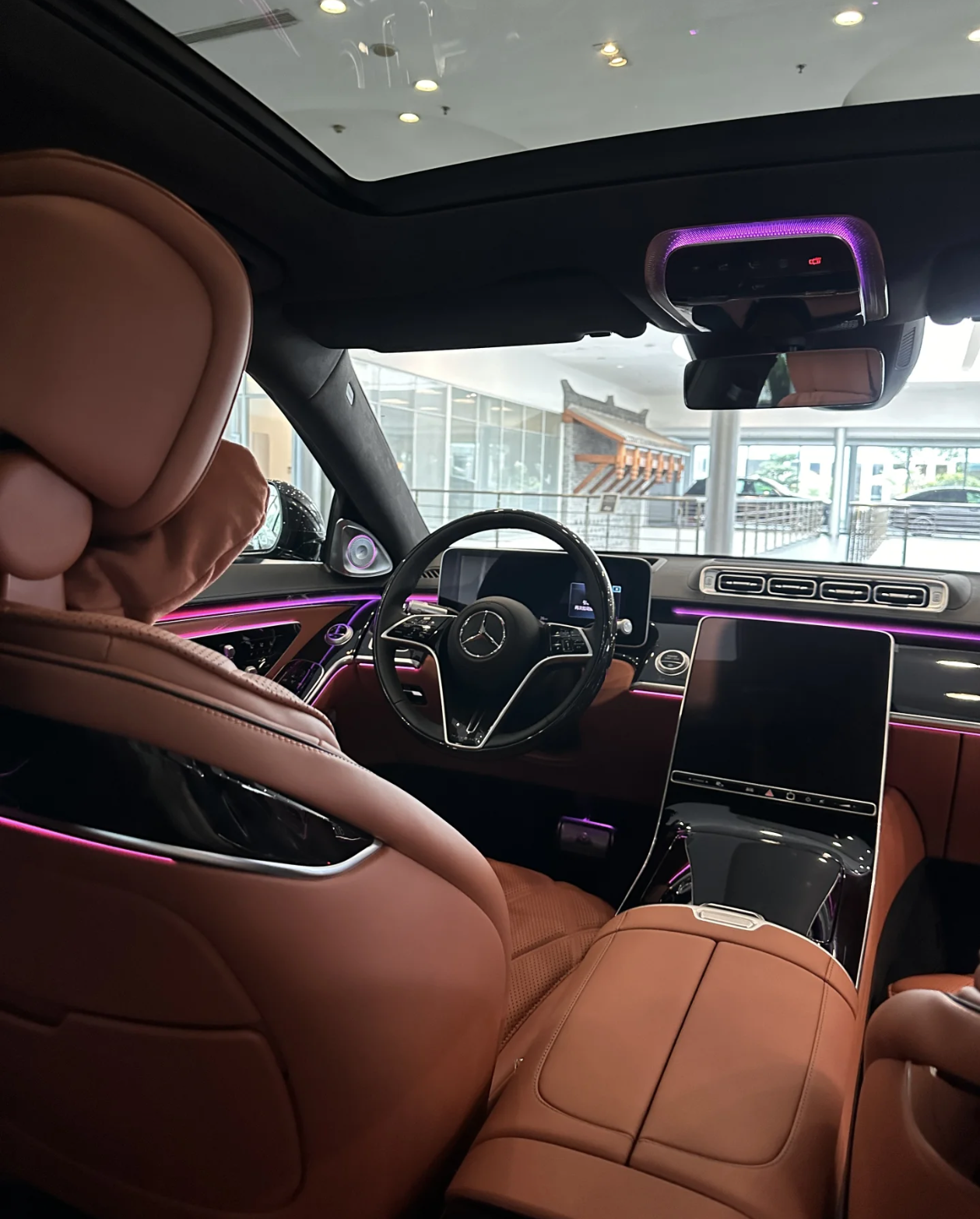
Which car interior is better for you, real leather or faux leather?
It depends on your specific needs.
If you are a parent who often needs to use your car to pick up and drop off your children, faux leather may be a better choice. Since real leather easily absorbs liquids and stains, it is relatively difficult to clean, while faux leather can be easily cleaned with a damp cloth.
If you have a limited budget but still want to own a car with a luxurious interior, faux leather is also a good choice. It has the luxurious appearance of real leather, but the price is more affordable.
On the other hand, if you live in an area with a hot climate and want the interior material to provide a comfortable touch, real leather would be a more suitable choice. Real leather does not absorb heat and feels soft to the touch, while faux leather may become sticky and hot in hot environments.
Of course, you also need to consider the maintenance time of the vehicle. If you have a busy schedule, you may not be able to maintain and clean the leather seats frequently. Over time, the leather seats may become old and ugly.
Therefore, before deciding which interior material to buy a vehicle, carefully weigh your needs and choose the option that suits you best.
In addition, from an environmental perspective, real leather is more sustainable than faux leather. The production of artificial leather involves the use of plastics, which are usually derived from polyurethane or PVC. These materials can have negative impacts on the environment during production, such as releasing toxic byproducts and consuming a lot of energy. In contrast, genuine leather comes from sustainable natural resources and is more environmentally friendly.
Finally, when artificial leather reaches the end of its life and is sent to landfill for disposal, most of the materials in it, such as PVC, are difficult to break down naturally or biodegrade. Even the remaining degradable materials can release toxic chemicals into the soil and water. In summary, the toxic chemicals contained in artificial leather may pollute the environment through leakage in landfills.
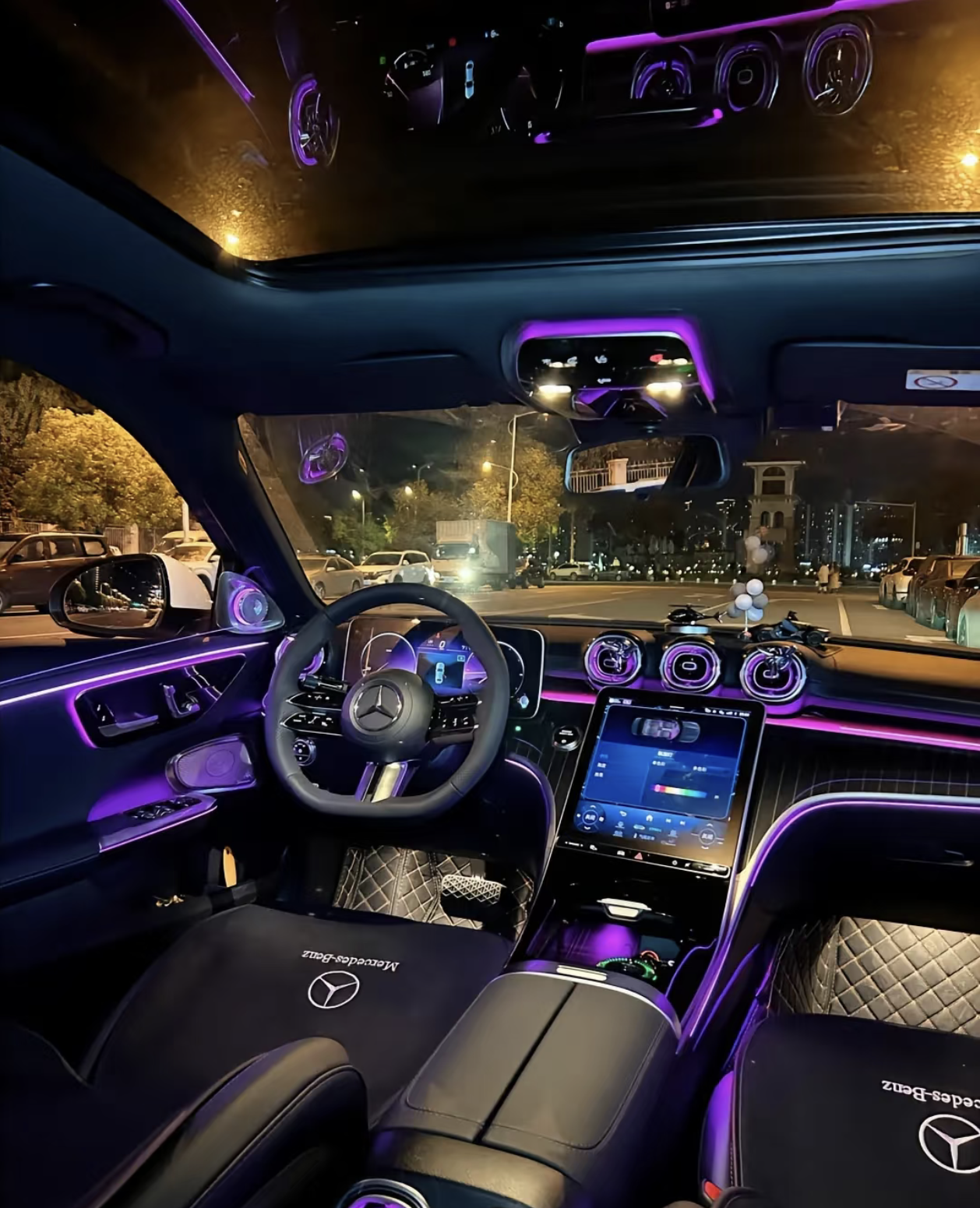
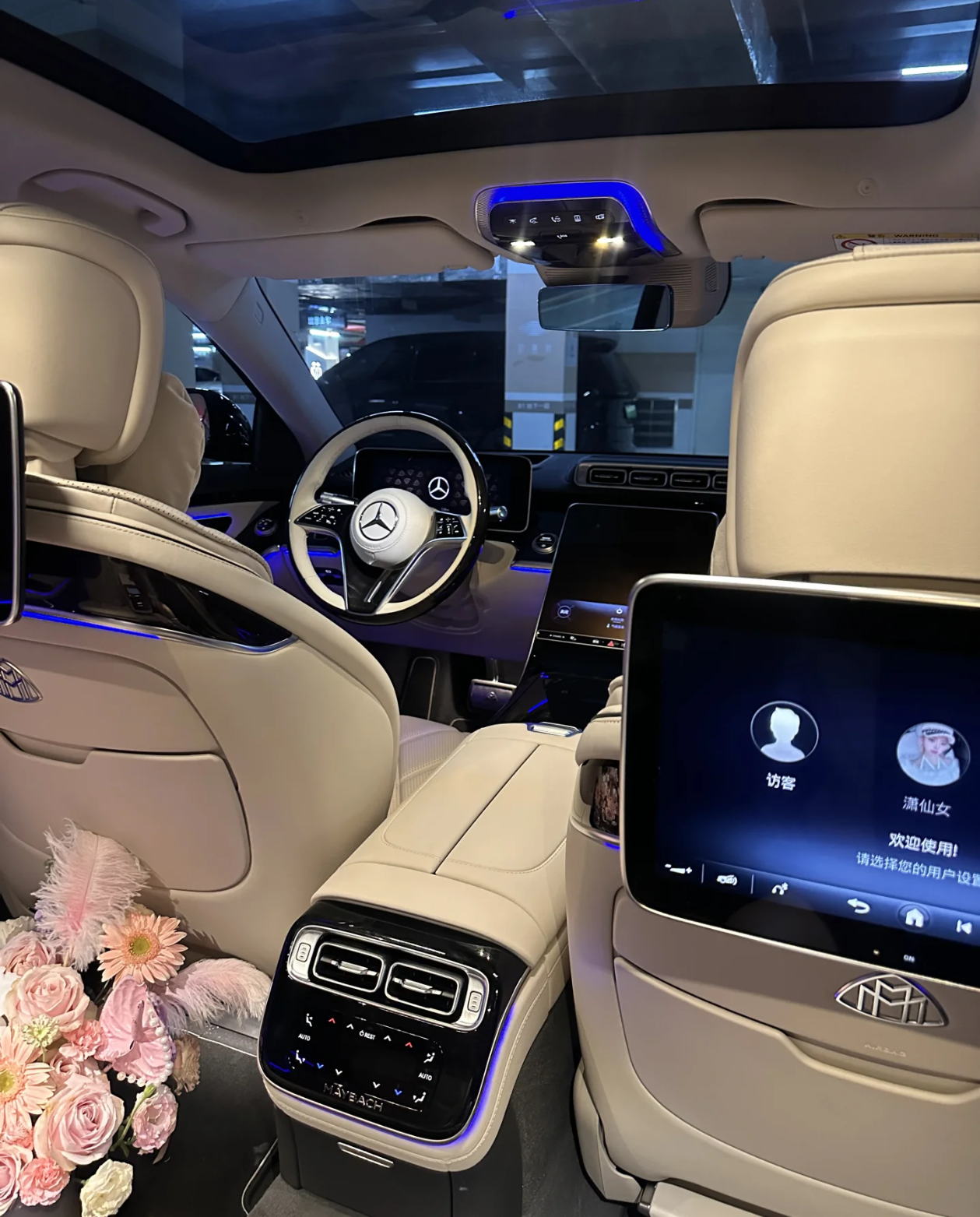
Does the interior of a car have leather or faux leather? How does this affect the resale value of the vehicle?
In the used car market, leather interiors often become a highlight to attract buyers and can even directly affect the price of the vehicle. According to data from Kelley Blue Book, vehicles equipped with leather seats often sell for $370 more than vehicles equipped with faux leather seats. This price difference is more obvious at resale, sometimes even up to $500.
However, with the continuous innovation of faux leather technology, the line between genuine leather and imitation leather has become blurred. Many mid-priced faux leather seats on the market have reached the level of high-priced genuine leather products in terms of appearance and touch. This poses a considerable challenge to consumers, because many car owners cannot even accurately distinguish between genuine leather and faux leather when buying a car.
Experts from automakers point out that although 94% of car owners mistakenly believe that their car is equipped with leather interiors, in fact, 13% of car owners actually purchase vehicles equipped with faux leather seats. This undoubtedly poses new challenges to both automakers and consumers.
In this regard, Brent Gruber, director of J.D. Power's global automotive division, said: "It's not a bad thing that people can't tell the difference between real leather and artificial leather! It's a testament to the outstanding achievements of material suppliers. They have successfully produced a synthetic material that looks and feels very similar to real leather. Although there are many artificial leather interior vehicles on the market that simulate leather, buyers often find it difficult to detect the difference." For example, the basic model of Mercedes-Benz C300 uses artificial leather interior. However, its exquisite craftsmanship and beautiful design make buyers often mistake it for real leather products when they first come into contact with it.
Genuine leather and artificial leather each have their own advantages in vehicle decoration. Genuine leather is praised for its luxurious appearance and durability, however, with the continuous advancement of technology, artificial leather has become closer and closer to genuine leather in appearance, even to the point where it is difficult to distinguish. Despite this, vehicles with artificial leather interiors still have many disadvantages, such as the material feels low-end and is not heat-resistant. In contrast, genuine leather interiors will be more comfortable and durable after being properly maintained, while also increasing the resale value of the vehicle. However, genuine leather also has disadvantages such as high price and difficulty in cleaning. Therefore, when choosing, you should weigh the pros and cons according to your personal needs. Before buying a car, clarify the purpose of use and focus so that you can make the choice that best suits your needs.
There are many types of leather for car interiors, which can be divided into the following categories according to materials and craftsmanship:
1. Natural leather Nappa leather
Derived from young cow or sheepskin, it is known for its softness and fineness, representing high-end craftsmanship. It is divided into grain leather (high-end, with natural wax feeling), soft leather (mid-range) and lychee grain cowhide (first layer/second layer).
It is mostly used in luxury cars such as Mercedes-Benz S-Class, requires regular maintenance and is prone to wrinkles.
Dakota leather
Commonly used in BMW models, harder and more wear-resistant than Nappa, with strong friction and high cost performance. The surface is fine-grained, suitable for sports models.
Aniline leather
Specially used for top luxury cars, divided into semi-aniline leather (Land Rover Range Rover, etc.) and full aniline leather (Rolls-Royce, Bentley), retaining natural texture and excellent touch.
Valonea leather
Vegetable tanned environmentally friendly leather, excellent breathability, with natural fragrance. Audi A8 and other flagship models use it, marked with "Feinnappa" or "Seidennappa" to represent different processing techniques.
Nevada leather
The first layer of cowhide retains natural scars and blood vein marks, divided into calfskin, grain leather, etc., with original texture.
2. Artificial/synthetic
Alcantara
A suede-like material synthesized from polyester and polyurethane, non-slip and wear-resistant, used for sports car steering wheels and seats. The disadvantage is that it is difficult to care for and easy to leave marks.
Artico artificial leather
Used in Mercedes-Benz mid- and low-end models, the touch is close to real leather, low cost and easy to maintain.
Microfiber leather
Wear-resistant and water-resistant but of lower grade, it is a high-cost artificial leather.
3. Other common categories
First layer of cowhide: Good breathability, requires regular maintenance; Second layer of cowhide: Made by lamination process, thicker but poor breathability.
Polyurethane artificial leather: Commonly used in mid- and high-end cars, environmentally friendly and low-temperature resistant, close to the texture of real leather.
Selection suggestions: For luxury cars, Nappa or aniline leather is preferred; for sports cars, Dakota or Alcantara can be selected; for economical needs, microfiber leather or polyurethane materials are recommended.
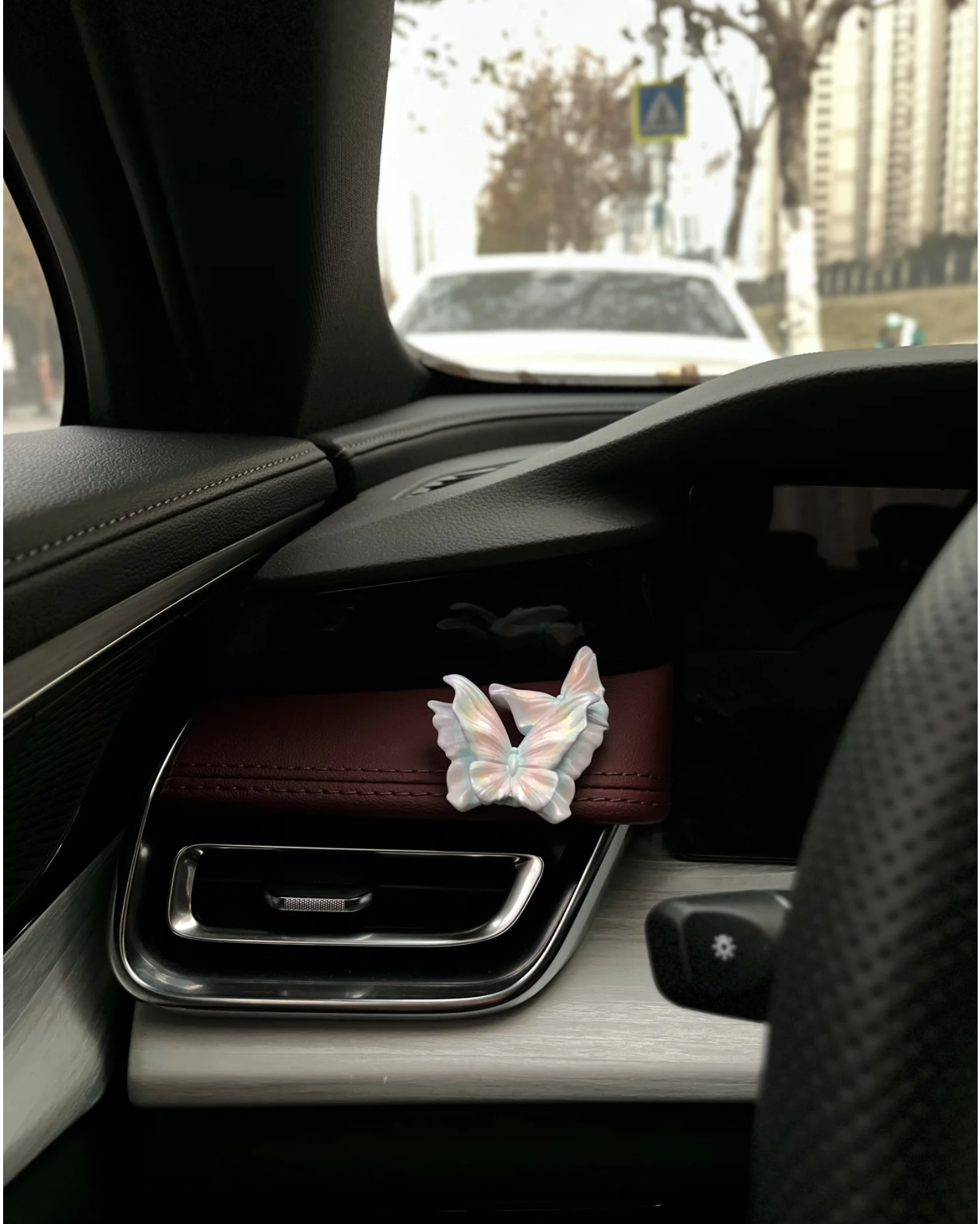
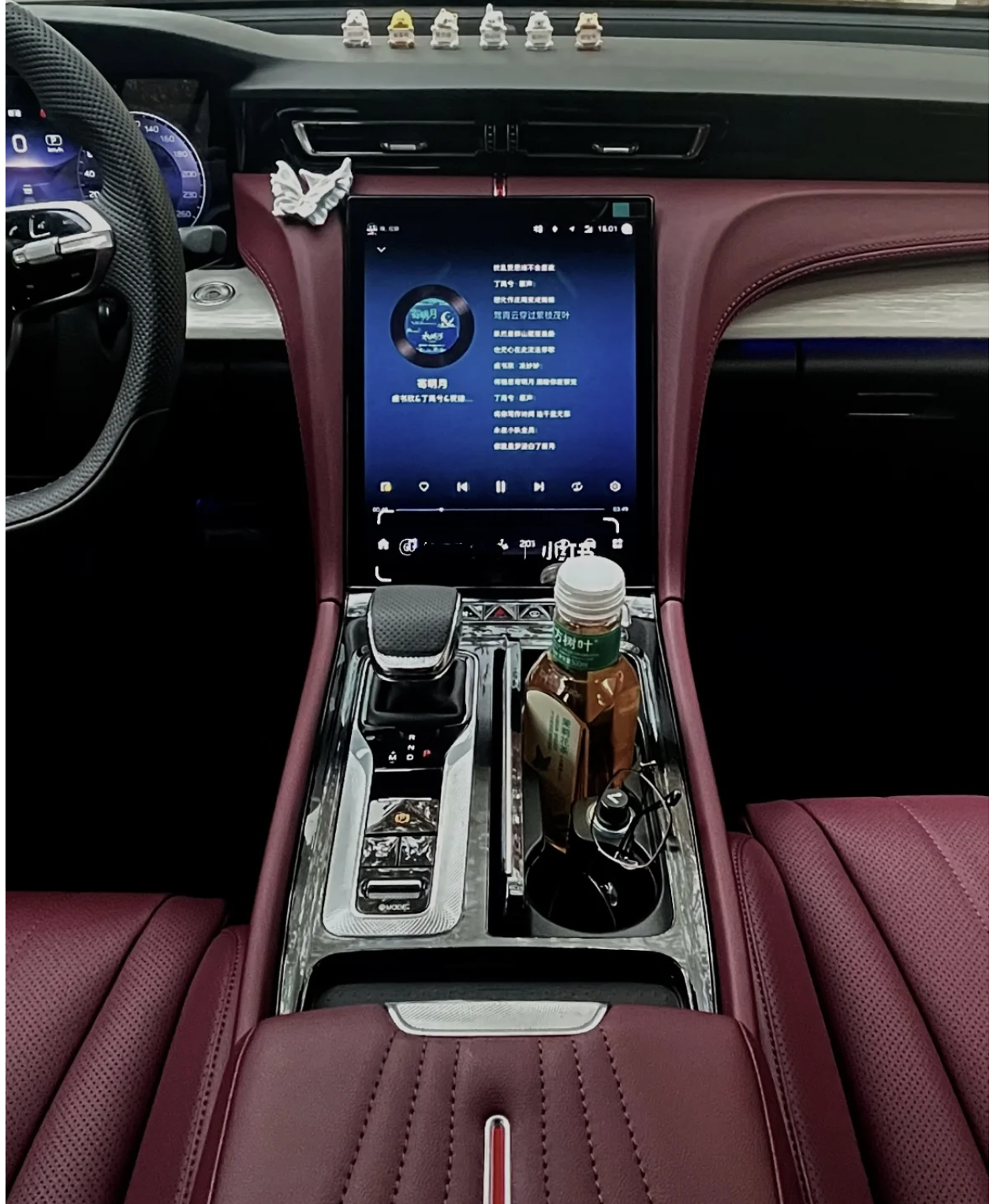

There are several types of leather for car seats:
1. Artificial leather: Artificial leather is the main leather material for car models, including PVC artificial leather made of PVC resin, PU leather produced with PU resin, and synthetic leather produced with PU resin and non-woven fabrics. Most of the artificial leather seats on the market today are made of PU polyurethane. The biggest advantage is low cost and durability. Some of the artificial leathers are even as good as genuine leather in terms of performance and practicality.
2. Microfiber leather: Microfiber leather is a relatively advanced artificial leather. Its full name is microfiber reinforced leather. It is a polyurethane composite. It feels very close to genuine leather, and is resistant to low temperature, wear, and pulling. It is not easy to crack. More importantly, there will be no pollution from production to use. It has excellent environmental protection performance, so it is widely used in mid-to-high-end models.
3. Genuine leather: Genuine leather is generally durable, not easy to rot, and not easy to damage. There are many types of genuine leather. Different animal leathers have very different processing technologies. The quality, grade, and price are also divided into many grades. The most commonly used in cars are top-layer cowhide or second-layer cowhide.
4. Artico leather: It is a kind of artificial leather, which is used in low-end models of Mercedes-Benz. However, it feels close to genuine leather, has a soft texture and is comfortable.
5. Nappa leather: It is not a brand or a variety of bulls, but more represents a level of craftsmanship. It is not polished or embossed, but only lightly painted to ensure the original breathability and touch of the leather. The surface is mostly soft grain, usually made of top cowhide, smooth and soft, and is most common in luxury brand models. Nappa varieties are usually divided into grain leather, soft leather and litchi grain cowhide. It is commonly found in luxury cars such as Mercedes-Benz and BMW.
6. Dakota leather: Compared with Nappa leather, it is harder and has stronger friction, which can increase a certain anti-slip effect. It is mostly used in brands and models that need to emphasize sportiness. Many BMW models use Dakota leather.
7. Merrino leather: It uses piping treatment, and the texture is more delicate than Nappa. It is mostly used in flagship models such as BMW 7 Series.
8. Alcantara: It is a composite material composed of polyester and polyurethane. It is very durable, non-slip, anti-fouling and fire-resistant. It is mostly used in sports cars or performance cars. Many people call it Alcantara suede. In fact, this is just a wrong name. Because the surface of Alcantara material is frosted and feels similar to suede, what I want to express is that suede refers to suede, not that Alcantara is suede. There are also many fake Alcantara materials in the market, but they only maintain the effect of suede in appearance.
9. Aniline leather: It is mostly used in top luxury cars and is divided into semi-aniline leather and full-aniline leather. Semi-aniline leather is mostly used in Land Rover Range Rover, Lexus LS, and Maybach S-Class.
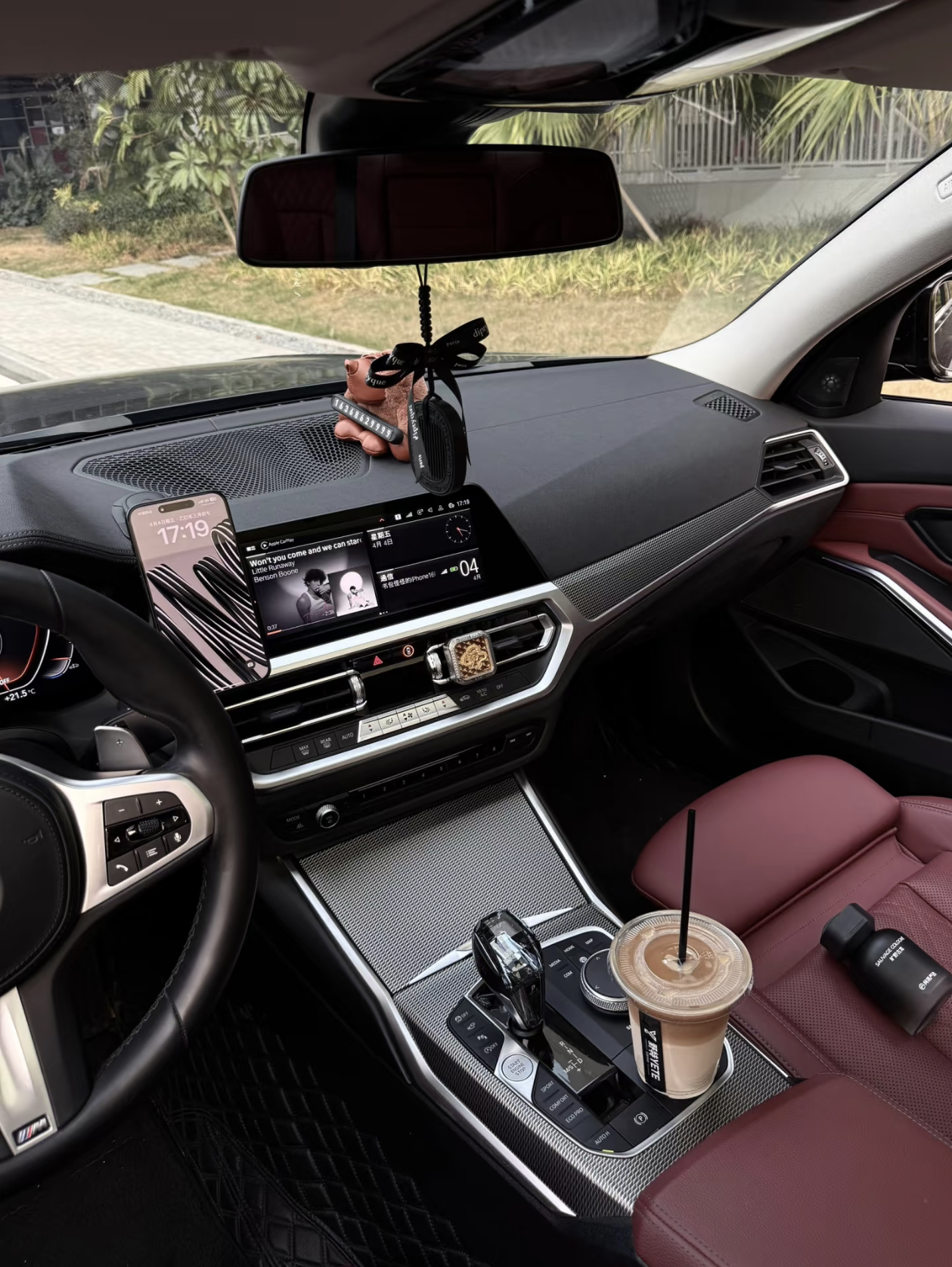
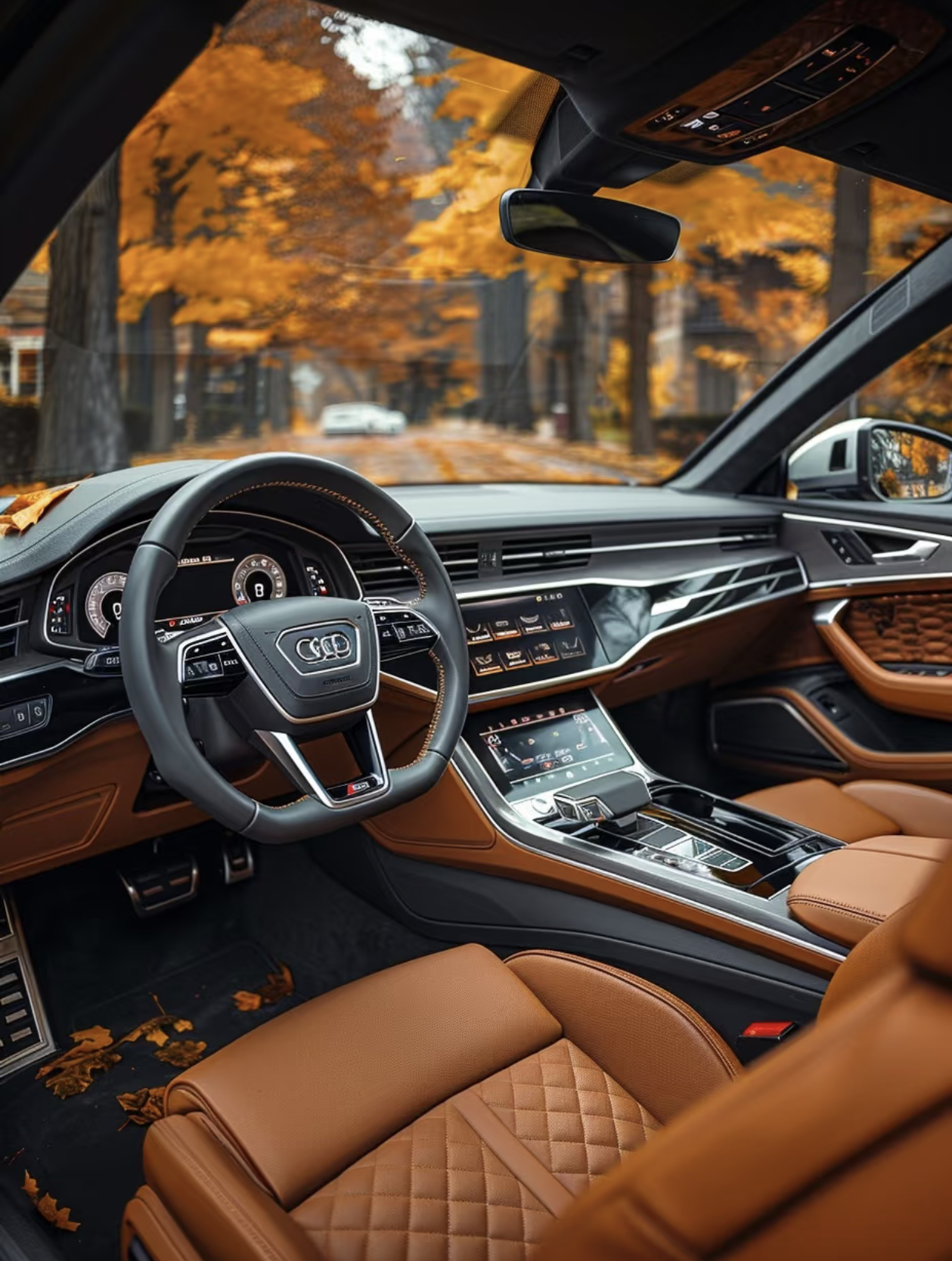
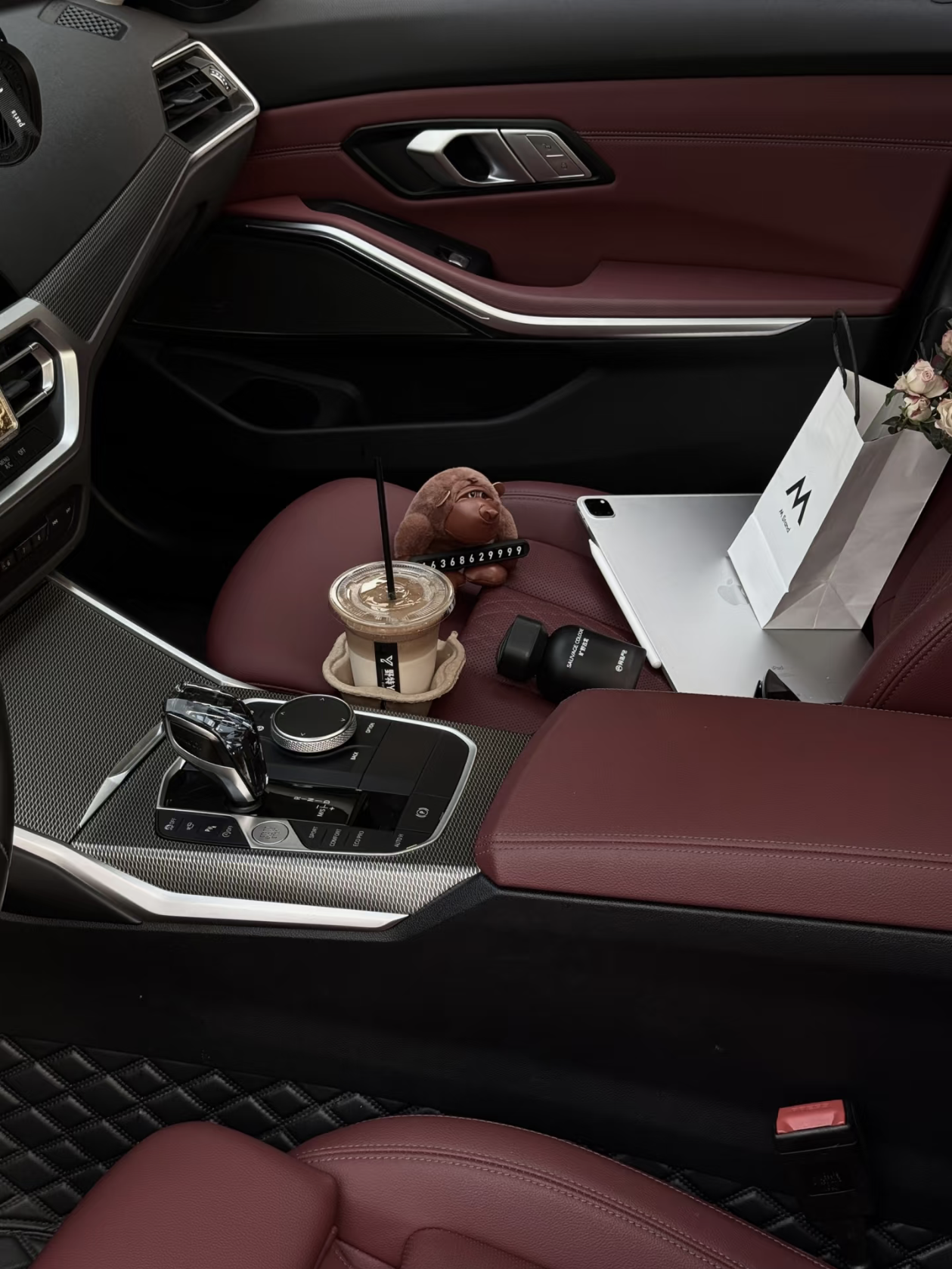
Here are some practical ways to distinguish between genuine and fake leather for car seats:
Observe the texture and feel
Characteristics of genuine leather: The texture is irregular and natural, with slight wrinkles and blemishes; it feels soft and warm, and rebounds slowly after being pressed.
Characteristics of artificial leather: The texture is too regular, the touch is hard or smooth, and it rebounds quickly after being pressed, and the marks are unnatural.
Smell test
Genuine leather: It emits a faint leather or animal skin smell, without a pungent chemical smell.
Artificial leather: It may have a pungent smell of plastic or chemicals, and emits black smoke when burning (not recommended).
Physical test method
Drip test: Genuine leather will absorb water slowly, while artificial leather is waterproof or seeps water very slowly (especially those with breathable holes).
Edge inspection: Genuine leather has burrs and rough fibers on the edges, while artificial leather has neat and smooth edges.
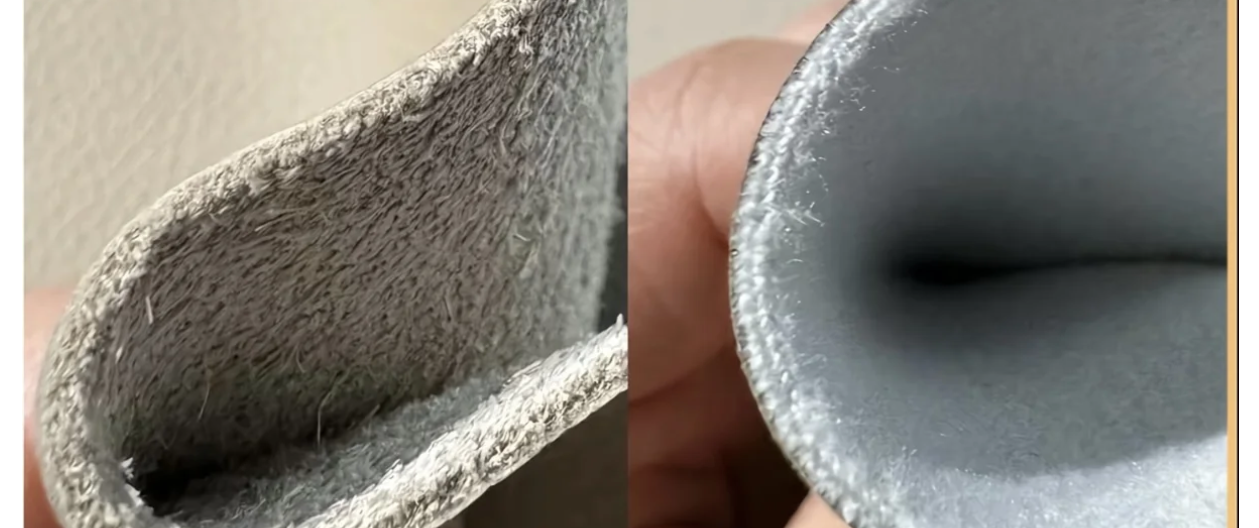
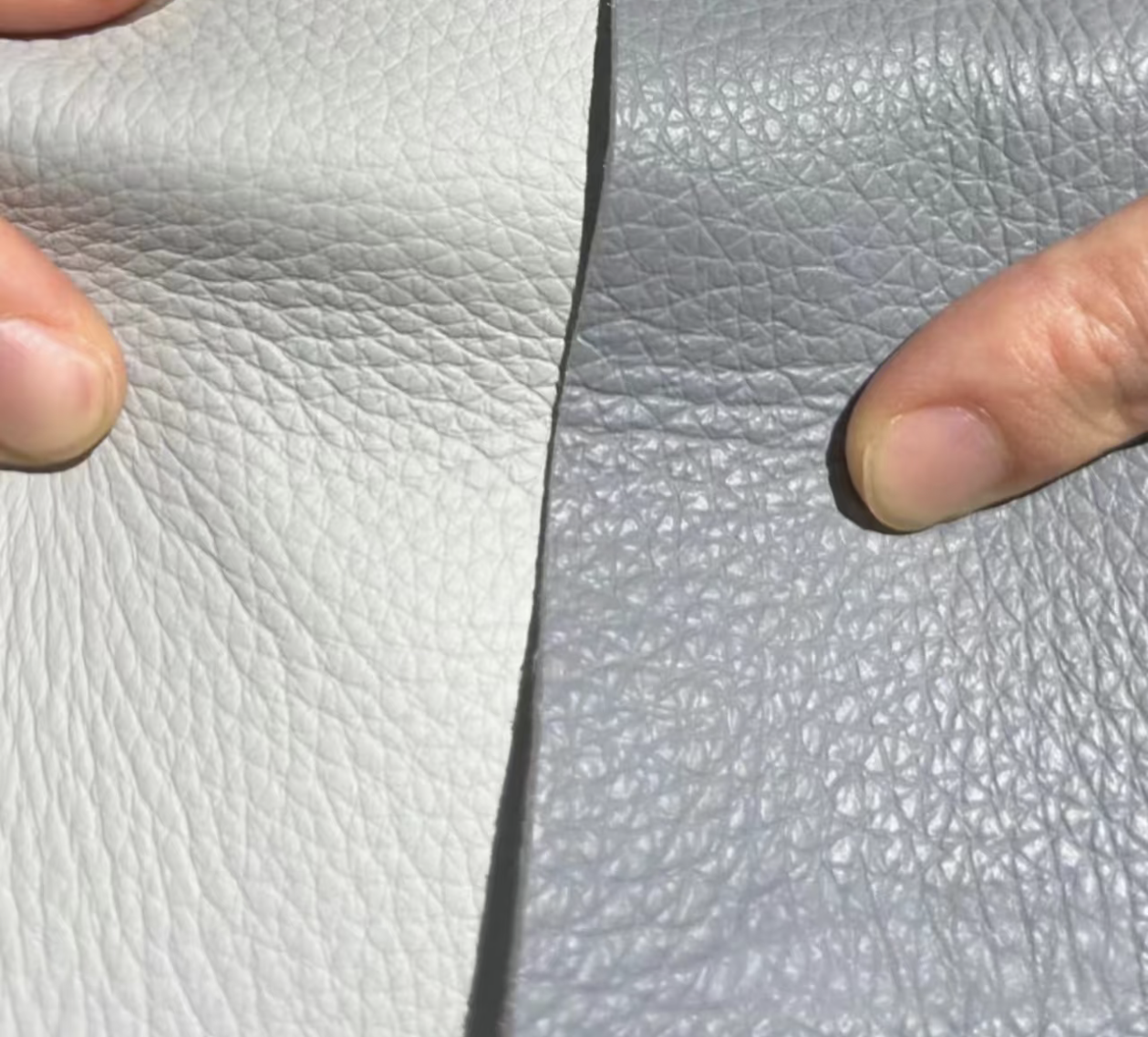
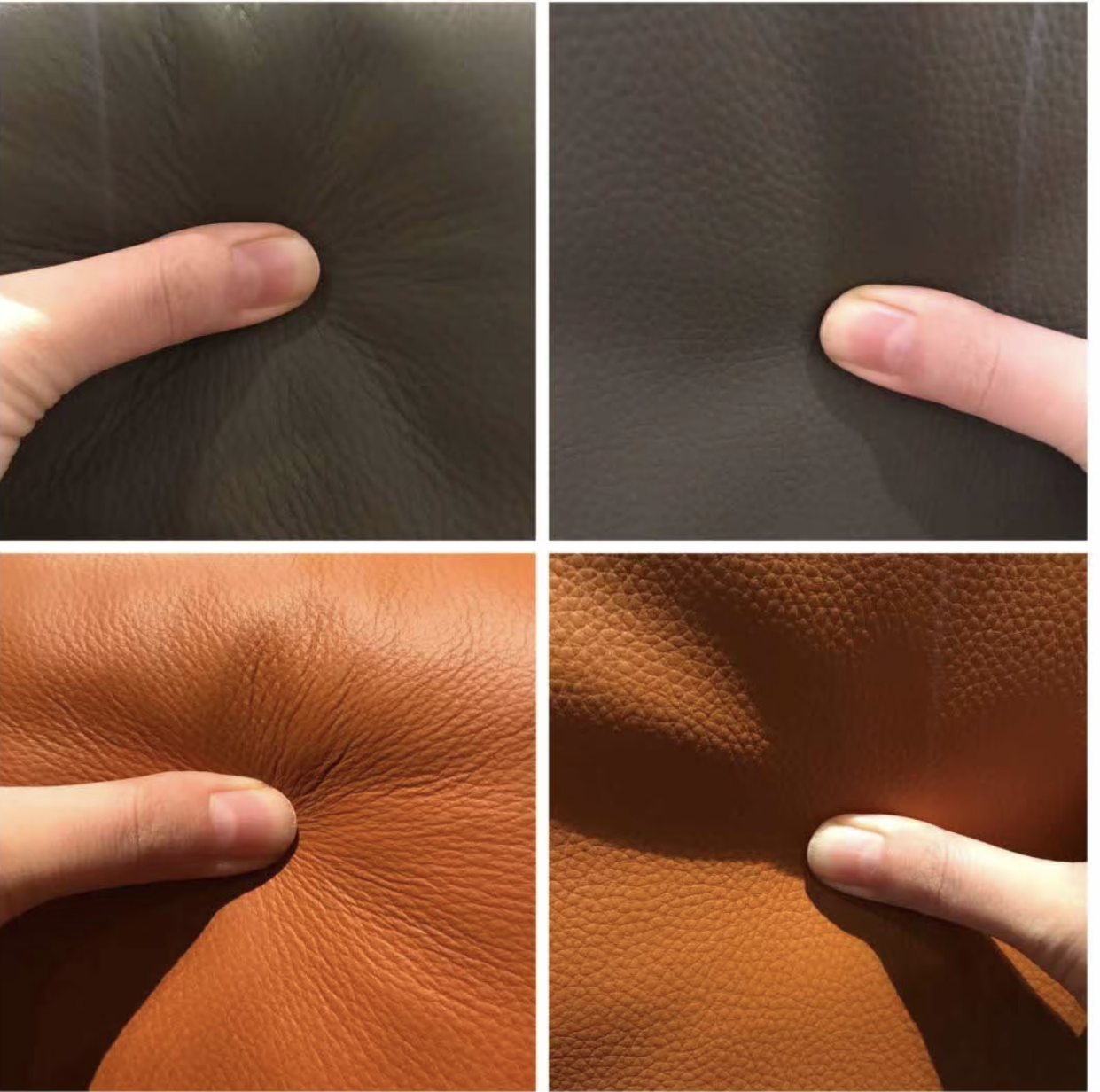
Genuine leather :Fibrous tissue
Imitation leather Suede texture
Genuine leather :Genuine leather is elastic. When pressed lightly, wrinkles will naturally appear on the surface from the inside to the outside. Even if you fold it, you can see irregular natural textures.
Imitation leather The surface has almost no obvious changes. There will be no natural wrinkles after pressing.
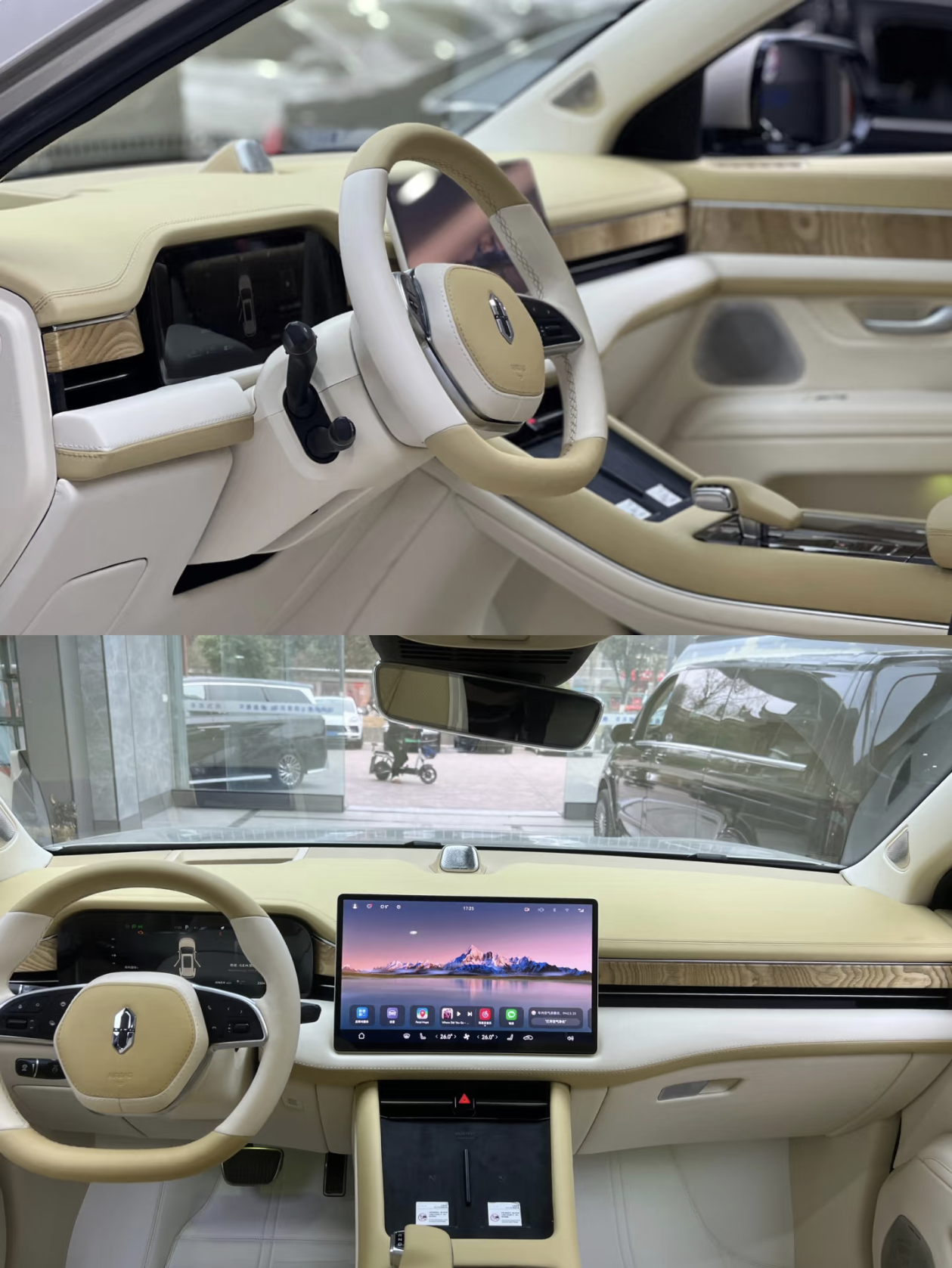
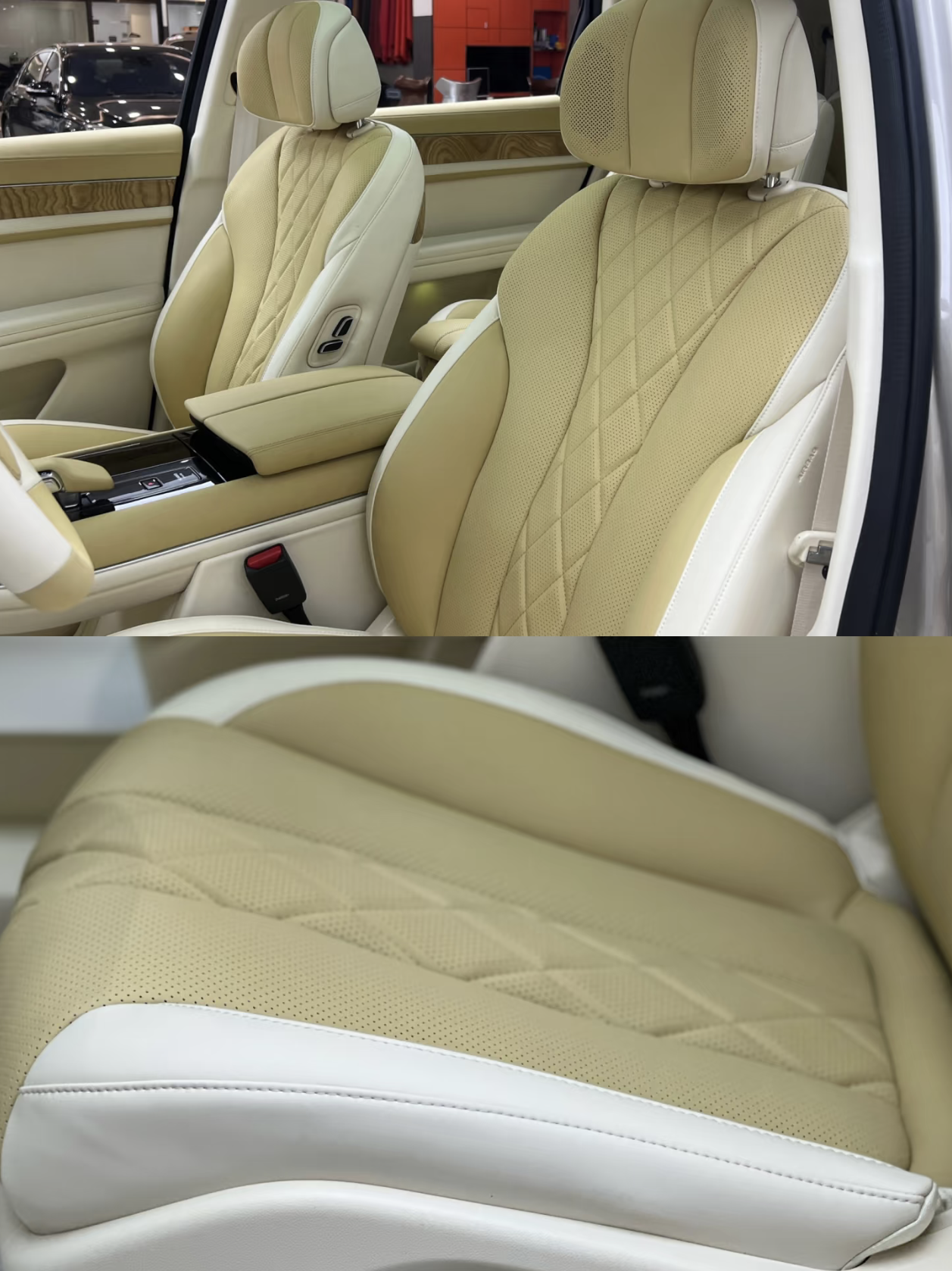

Post time: Apr-27-2025







